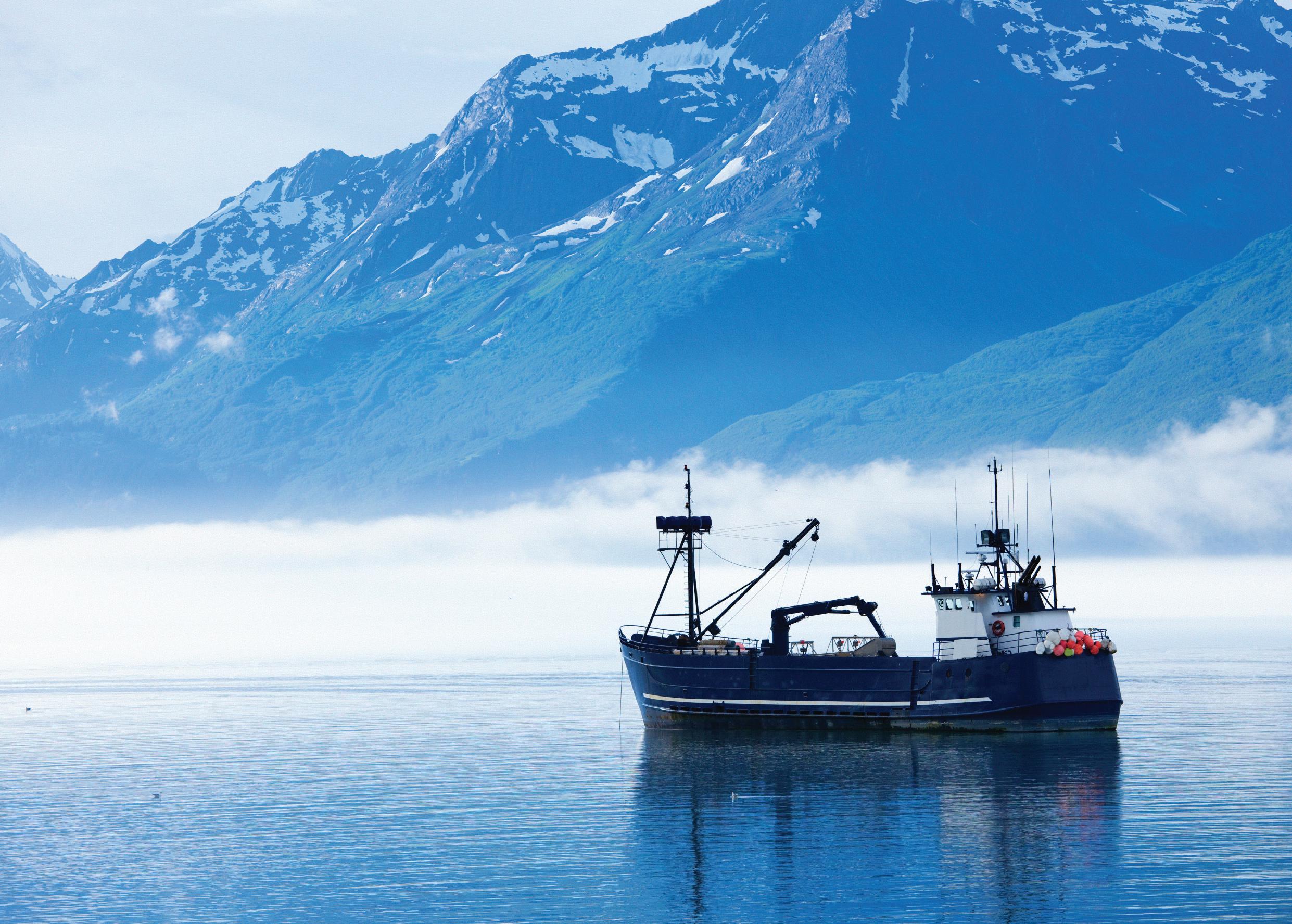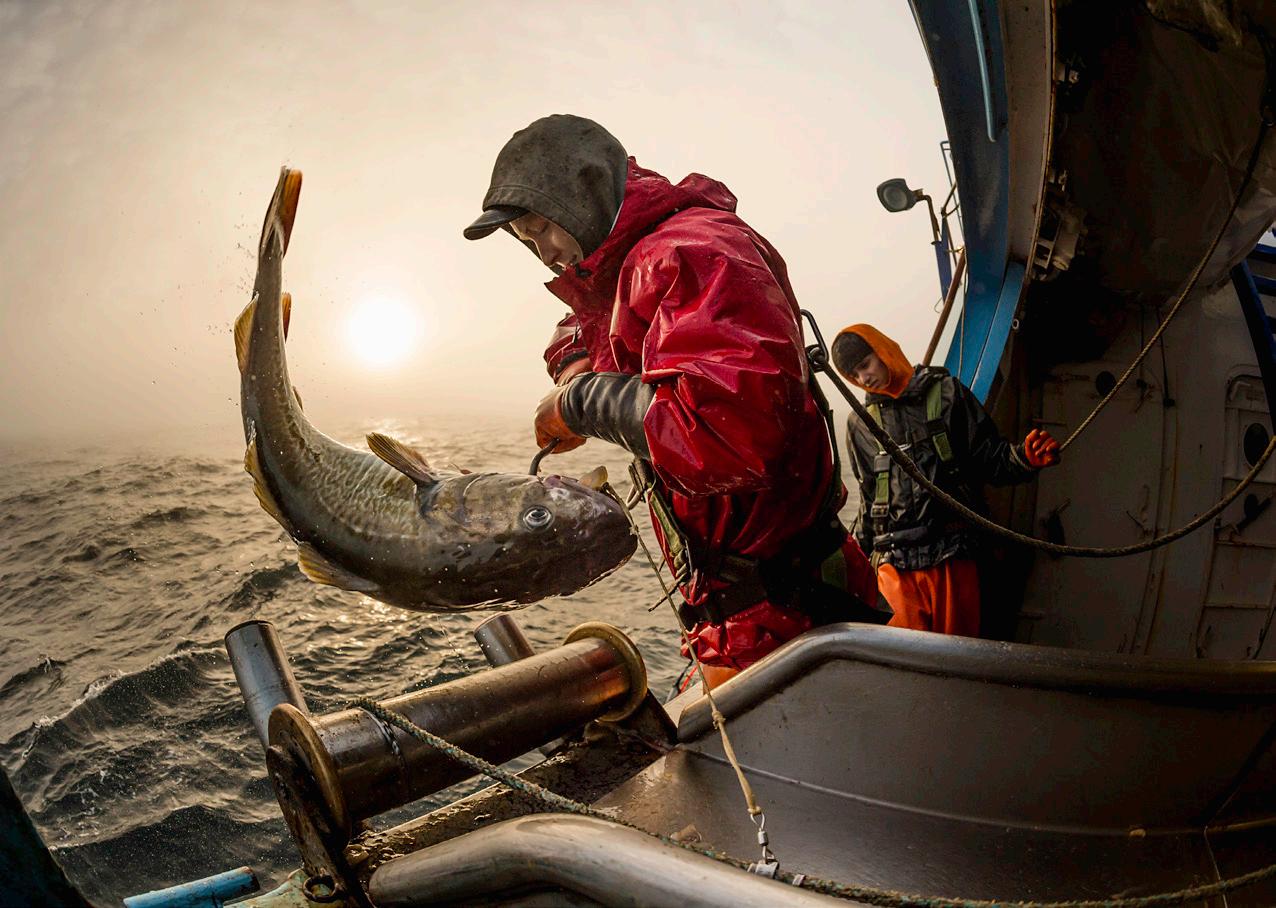




The latest update of the Marine Conservation Society’s (MCS) Good Fish Guide has seen Northeast Atlantic mackerel moved on to the amber list, having been on the green list since before 2011.
MCS said that an amber rating means that improvements are needed – in this case, better management to end overfishing of the stock. In total the UK charity has reviewed 186 environmental ratings for seafood, with 20 seafood ratings moving to the guide’s ‘Fish to Avoid’ list and 15 seafood ratings joining the green-rated, ‘Best Choice’ list.
MCS stated that in the past, populations of mackerel have been large enough to withstand fishing, but that in recent years the population has been in steady decline. The fish is caught by various coastal states, including Norway, Iceland, the UK and the EU, but currently, these countries are not working together to tackle the stock’s overfishing.
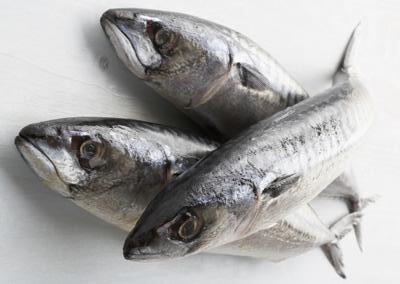
With no agreement on how to divide the catches, quotas have been higher than scientifically recommended limits since 2009, exceeding them by as much as 80% in some years.
In October 2021, the main fishing states again agreed that total mackerel catches in 2022 should not exceed the scientific advice, but not how the catches should be divided. The combined catch limits set by all countries for 2022 exceeded advice by 42%.
“International cooperation is the only way to fix this problem, and UK governments must lead by example. We need to see countries agree on quotas, and extra management measures being put in place to protect stocks,” MCS Good Fish Guide Manager Charlotte Coombes said.
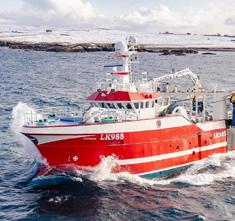
With regards to other species featured in the guide, European eel stays on the Fish to Avoid list, while wild-caught Pacific salmon and North Sea herring remain green-rated. MCS’s Good Fish Guide for Business is a free tool to assist chefs, restaurants and anyone working in the seafood supply chain. Mackerel reaction – pages 10 & 11
A 5% reduction in Norway’s proposed aquaculture resource rent tax has been put forward by the country’s government, together with a higher pretax threshold for company profitability.

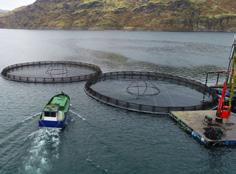
According to the long-awaited proposal, fish farming conducted in coastal waters will
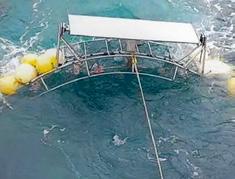
be subject to a tax rate of 35%. The Norwegian government said the revised proposal’s standard tax on profits above NOK 70 million will mean only companies with significant profits will pay the resource rent tax.
More salmon tax – page 32
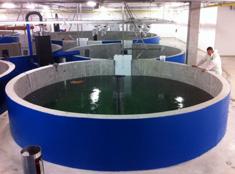
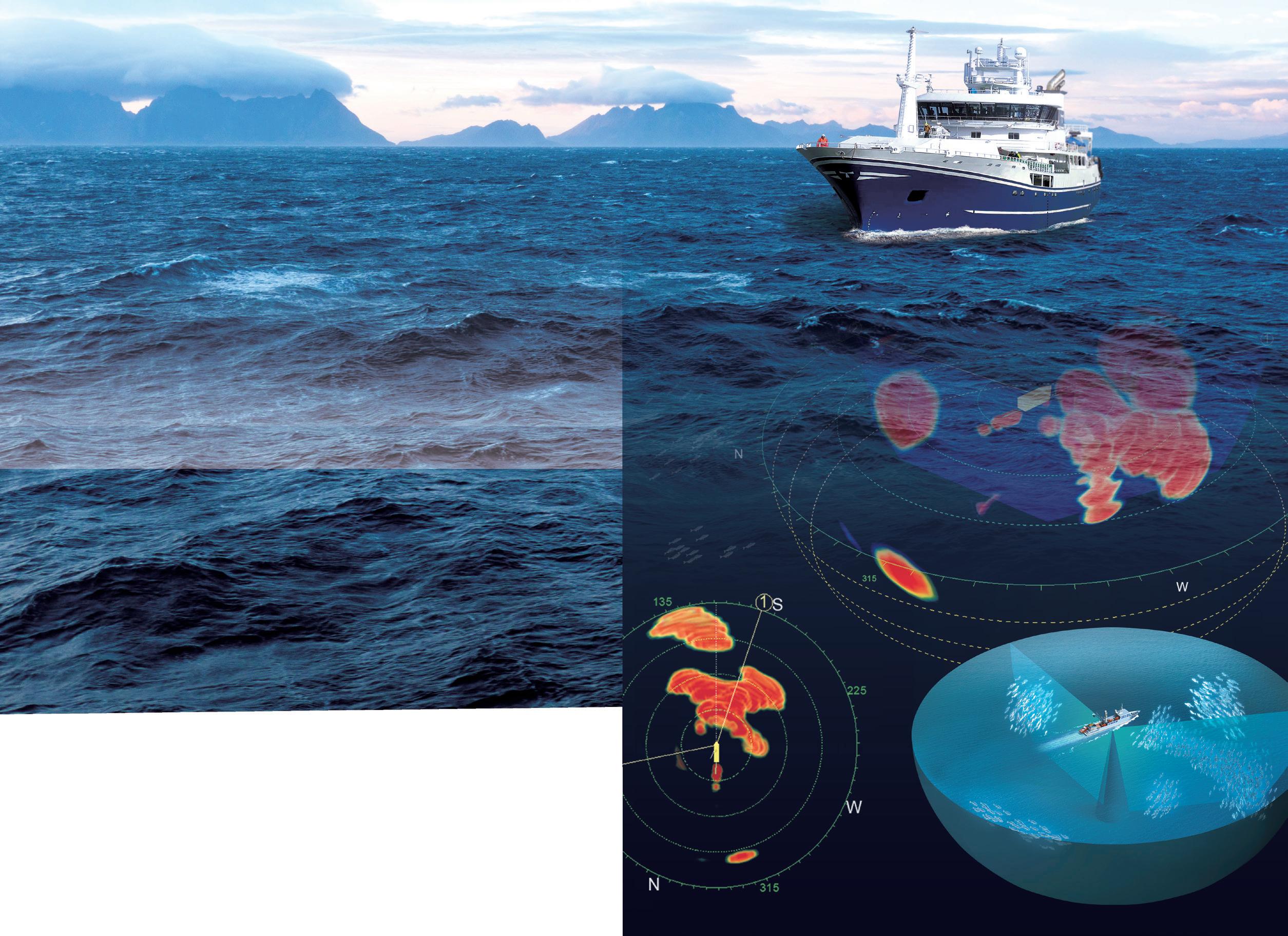
Discover the 3D Sonar Visualizer™ F3D-S - a revolutionary product that displays sh and sonar data in 3D. Compatible with FSV-25/FSV-25S, it uses your existing sonar's hull unit to display sh, peaks, and sea oor details in a 3 dimensional “real world” view. Remove the seabed and adjust the depth line control to clearly visualize midwater marks and optimize your shing strategy. Experience a completely new way of shing with the revolutionary 3D Sonar Visualizer™ F3D-S.


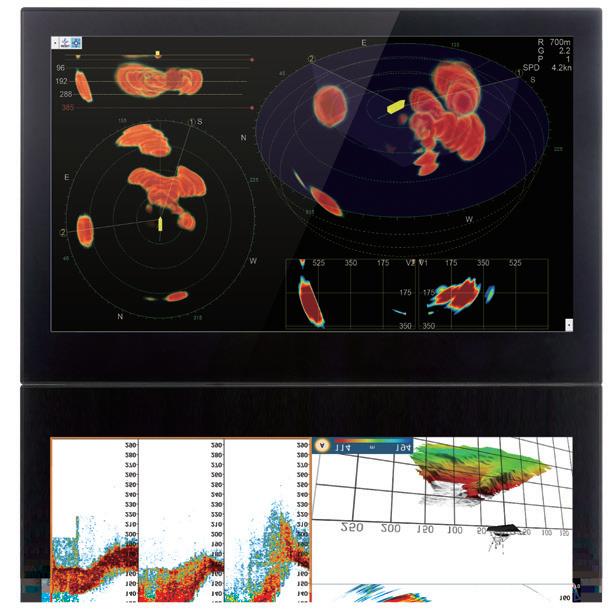
On the face of it, the downgrade of Northeast Atlantic mackerel from “green-rated/fish-to-eat” to “amber-rated/ok-to-eat” in the Marine Conservation Society’s latest Good Fish Guide might not seem like much, but it represents another sorry backwards step in the credibility of this commercially very important fish.
Essentially the guide, which is designed to assist chefs, restaurants and indeed anyone working in seafood supply chains, is advising that mackerel is no longer sustainable – something that quickly caught the attention (and headlines) of mainstream media, and which will inevitably filter through into consumer decision-making.
In allocating the new rating, MCS states the NEA mackerel population has been in steady decline in recent years and points the finger at those coastal states catching the fish, including Norway, Iceland, the UK and the EU, for failing to work together to stop it being overfished. This excessive effort has been ongoing since 2009.
The consistent inability to find an agreed solution meant the combined catch limits set by all coastal states for 2022 exceeded the scientific advice by around 42%. It’s for this same reason that the fishery’s Marine Stewardship Council certification was lost in 2019.
Coming into this year, there’d been strong hopes things would get back on track, particularly after some positive noises were made at the 2022 coastal states’ talks. Unfortunately, when push came to shove, the parties failed to meet their self-imposed deadline of 31 March to reach a final agreement on mackerel quota sharing. Supply chains are now left frustrated, and eyes will be on those industry players who had already issued warnings of sourcing shifts if a sustainable agreement wasn’t forthcoming. Ultimately, it could be that turning amber back to green will come down to market pressure rather than political will.
The international fishing & aquaculture industry magazine
EDITORIAL & CONTENT
Editor: Jason Holland jholland@worldfishing.net
News Reporter: Rebecca Strong rstrong@mercatormedia.com
Regular Correspondents: Please contact our Correspondents at editor@worldfishing.net
Tim Oliver, Bonnie Waycott, Vladislav Vorotnikov Quentin Bates, Terje Engø Eduardo Campos Lima, Eugene Gerden
Production
David Blake, Paul Dunnington production@mercatormedia.com
SALES & MARKETING t +44 1329 825335 f +44 1329 550192
Media Sales Manager: Hannah Bolland hbolland@worldfishing.net
Marketing marketing@mercatormedia.com
EXECUTIVE Events Director: Marianne Rasmussen-Coulling
Chief Executive: Andrew Webster awebster@mercatormedia.com

WF magazine is published monthly by Mercator Media Limited, Spinnaker House, Waterside Gardens, Fareham, Hampshire PO16 8SD UK t +44 1329 825335 f +44 1329 550192 info@mercatormedia.com www.mercatormedia.com
Subscriptions
Subscriptions@mercatormedia.com Register and subscribe at www.worldfishing.net
1 year’s digital subscription with online access £204.50 For Memberships and Corporate/multi-user subscriptions: corporatesubs@mercatormedia.com
Launched in 1952, World Fishing & Aquaculture is published by Mercator Media, a B2B media and events company specialising in international maritime industries, including marine business and technology, ports and terminals, and environmental strategies.
Through its monthly publication and free access website (www. worldfishing.net), World Fishing & Aquaculture provides expert-written, in-depth coverage of the fisheries, aquaculture and processing sectors, with a strong focus on the emerging solutions, technologies and innovations that are shaping the broader seafood economy’s landscape.
2023. ISSN 2044-1908 (online). World Fishing
a
mark of Mercator
Ultimately, it could be that turning amber back to green will come down to market pressure rather than political will
Just eight of the world’s 23 major commercial tuna stocks are avoiding overfishing and maintaining target stock biomass levels when measured against the Marine Stewardship Council’s Fisheries Standard, a new report commissioned by the International Seafood Sustainability Foundation has determined.
Norway exported seafood worth NOK 41.4 billion in the first quarter of 2023, an increase of 22% compared with the same period last year. However, with volumes down, factors such as inflation and a weak kroner have played a significant part in the upturn.
Land-based producer Kingfish Maine has harvested its first Dutch yellowtail, with a limited release of the first fish to be commerciallyproduced in the United States. Bristol Seafood has been processing the first batch at its Portland facility.
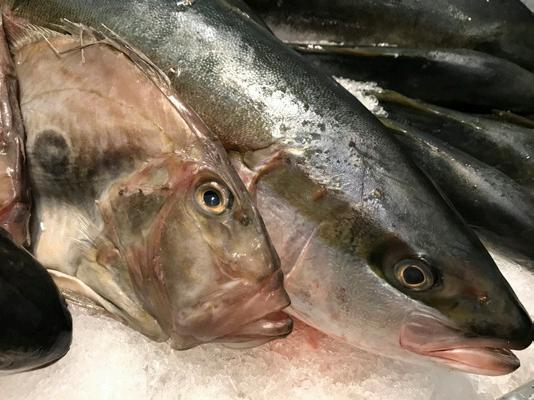
A new commercial fishing safety campaign is underway to reduce fatalities and accidents within the UK’s fishing sector. Led by the Fishing Industry Safety Group, Home and Dry is targeting the higher risk under-10metre fishing fleet.
US consumers are eating seafood from countries with a history of illegal fishing and human rights violations at sea, determines new analysis from Oceana, with the ocean conservation organisation insisting that US authorities are failing to protect seafood consumers while allowing American dollars to drive illegal, unreported, and unregulated (IUU) fishing and forced labour around the world.
The report highlights US government trade data for seafood imports from 10 countries recognised internationally for IUU fishing offenses or human rights abuses, including China and Russia. Other countries included in the analysis are Taiwan, Cameroon, Mexico, Costa Rica, Senegal, Panama, Cambodia and Vietnam. Oceana found that only about 30% of the total volume of seafood imports from these countries are subject to traceability requirements by the US government.
In 2016, the National Oceanic and Atmospheric Administration (NOAA) established the US Seafood Import Monitoring Program (SIMP), which requires catch documentation and traceability for some seafood at risk of IUU fishing and seafood fraud. But Oceana has pointed out that the programme only covers 13 species and species groups – representing about 40% of US seafood imports, and the traceability requirements only apply from the fishing vessel or farm to the first point of entry into US commerce –the country’s border.
Oceana’s analysis found that in 2022, the US imported over $30 billion worth of seafood from 150 countries, and the top contributor was China, which exported almost $2 billion of seafood products to the market. Only about 13% of the total volume of US imports from China were covered by SIMP and subject to documentation and traceability requirements, while vessels flagged to China
have consistently been cited by international authorities for illegal fishing and human rights offenses at sea.
Between January and June 2022 (before the temporary ban on Russian imports), Russia exported nearly $1 billion of seafood products to the United States and only 48% were covered under SIMP. Russia is the second top offender for IUU fishing and human rights abuses, according to the IUU Fishing Index.
“No one wants their seafood dinner coming with a side of forced labour or illegal fishing. But the bottom line is Americans are eating seafood from nations known for the most egregious behaviours at sea,” Oceana Campaign Director Dr Marla Valentine said. “Oceana’s analysis exposes just how much seafood crosses our borders and goes onto our plates without any traceability requirements. The good news is the US government has the tools to ensure all seafood sold in the United States is safe, legally caught, responsibly sourced, and honestly labelled.”
Valentine continued, “The Seafood Import Monitoring Program can shed light on notoriously opaque seafood supply chains and give the government enough information to proactively prevent illegally sourced seafood from entering the United States – but only if it is
expanded to cover all seafood imports, instead of just a small handful. It’s time for NOAA to reject seafood sourced from IUU fishing and forced labour.”
Oceana added that according to the Presidential Task Force on Combating IUU Fishing and Seafood Fraud established in 2016, the original goal of the US government was to eventually expand SIMP to all seafood, but in the seven years since NOAA implemented SIMP, this goal has not been met.
The international organisation is therefore recommending the US government takes the following actions:
n Expand catch documentation and traceability requirements of SIMP to all seafood
n Improve SIMP implementation by updating the key data elements and critical tracking events collected to better allow NOAA to analyse the data and inform risk-based screening, audits and enforcement
n Extend traceability from the boat or farm to the dinner plate and provide consumers with basic information about the seafood they purchase
n Build in mechanisms to address forced labour and other human rights abuses
lower pressure
lower pressure




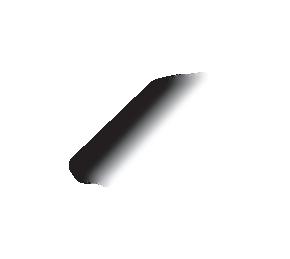
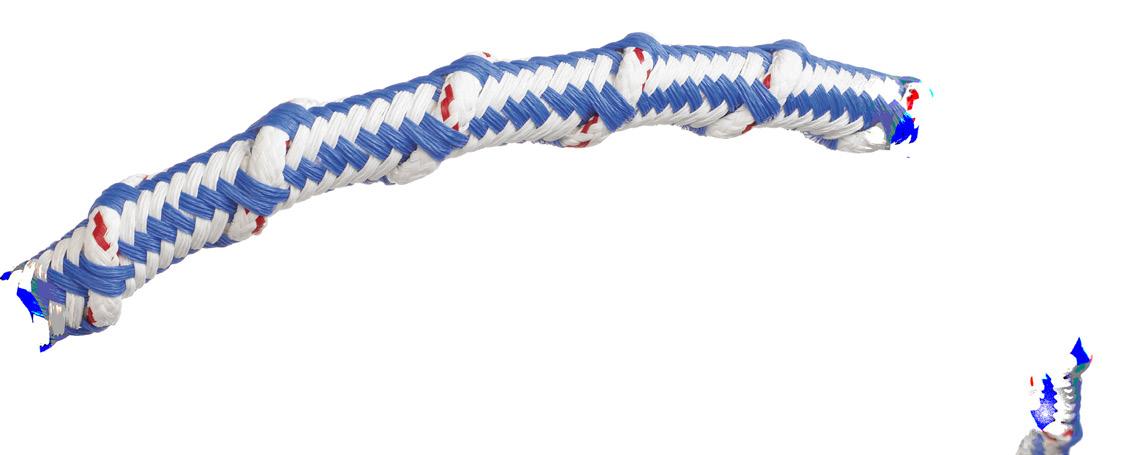
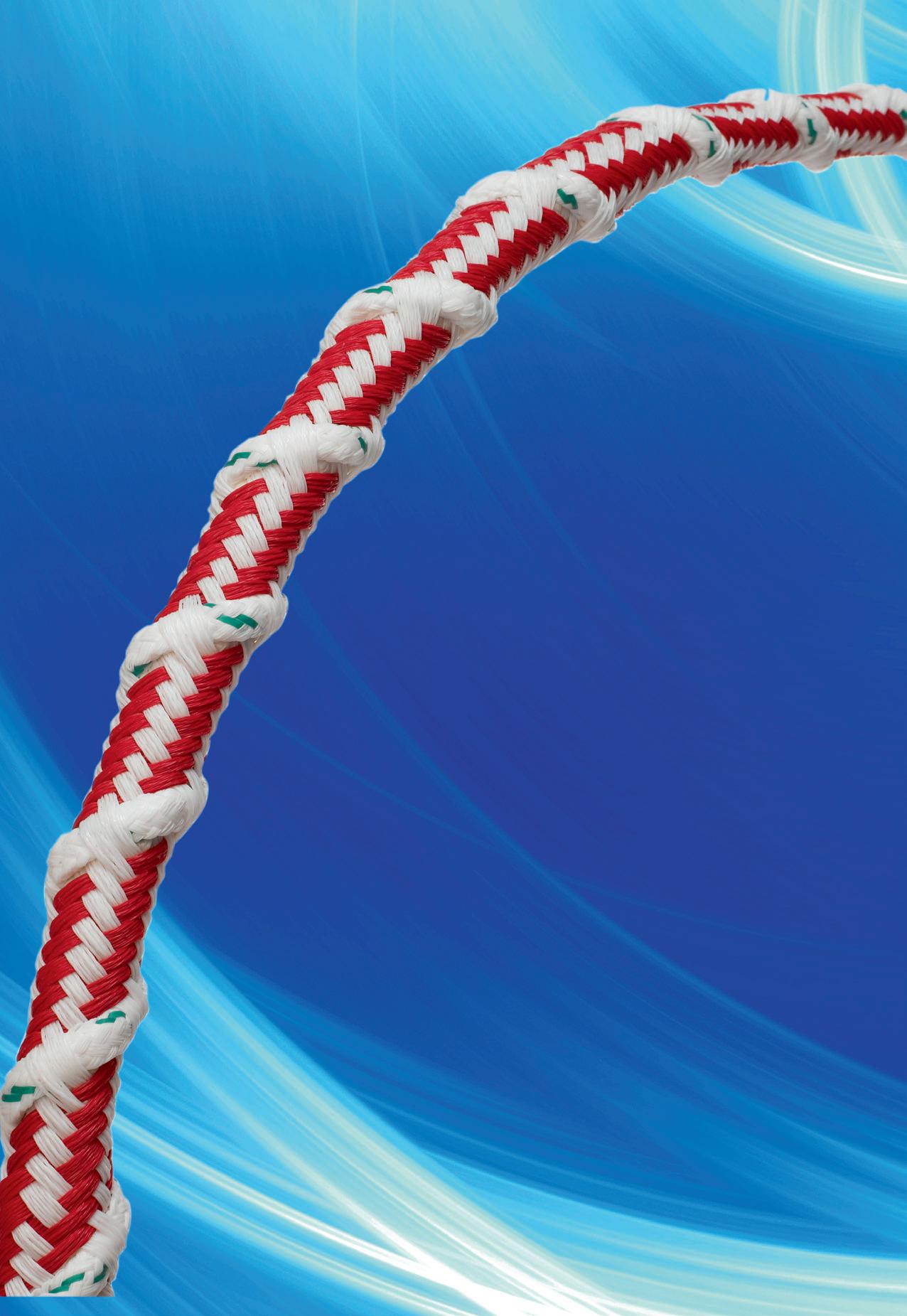
A form of illegal bottom trawling is causing severe environmental and economic damage to the Gulf of Gabès in Tunisia, according to a new report from the Environmental Justice Foundation (EJF) and FishAct.
In “Kiss of Death: How illegal bottom trawling threatens ecosystems and livelihoods in Tunisia”, the NGOs have identified that so-called “kiss trawling” is causing sustained, severe harm to this biologically diverse ecosystem, and are calling for immediate action to end the fishing method. They explain that the gulf houses one of the largest remaining expanses of Posidonia oceanica seagrass, which is native to the Mediterranean and sequesters carbon at up to 70 times the rate of tropical forests, absorbing around 15-20% of Tunisia’s CO2 emissions.
This vital seagrass, which is subject to regional protection under the Barcelona and Bern Conventions, also protects Tunisia’s coast from erosion, enhances water quality and serves as an important nursery area and habitat for many marine species, including endangered sharks, sea turtles and commercially-important fish.
EJF CEO and Founder Steve Trent said the investigations make it clear that illegal bottom trawling directly harms a critically important ecosystem in the Gulf of Gabès, and the wildlife and people dependent on it.
n The Gulf of Gabès is one of the most important fishing areas in Tunisia and suffers from the highest levels of overfishing
illegally by kiss trawlers, in contravention of EU legislation which aims to end illegal, unreported and unregulated (IUU) fishing. Fish caught by kiss trawlers is suspected of being laundered into legal supply chains, primarily to Italy and Spain.
“A sustainable way of life is disappearing, and the important role of seagrasses in sequestering carbon is seriously threatened. Tunisian, EU and GFCM leaders must take action to protect the Gulf of Gabès now and ensure a just transition for impacted communities,” he said.
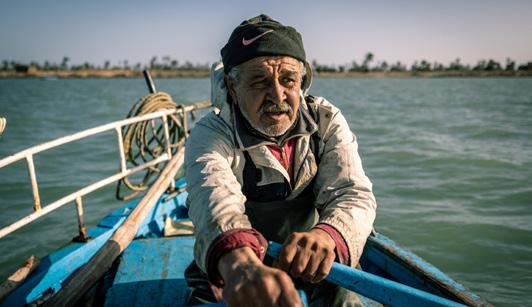
Kiss trawlers are small vessels commonly under-10 metres in length operating in shallow waters. They use small mesh nets with bycatch levels of up to 95%, much of which is discarded.
The report points out that despite being illegal under Tunisian law, kiss trawling is practised openly with little effort to hide operations. It adds that the practice has multiplied over the past decade, with the number of trawlers increasing by over one-third between 2018-2022.
EJF investigators documented kiss trawling at around one nautical mile from the shore, in apparent contravention of regional management measures aimed at conserving vulnerable sharks and rays implemented by the General Fisheries Commission for the Mediterranean (GFCM).
Artisanal fishers report that they cannot compete with kiss trawlers. Charfia and other smallscale fishers say their traditional practices may disappear in the face of kiss trawling, that trawlers damage their gear, and that fish populations are declining sharply in the face of this illegal fishing.
Seeing no other option, some have been forced to transition to kiss trawling themselves.
The investigations also found that EU member states may be importing seafood caught
As the most important market for seafood from Tunisia, the EU has a responsibility to ensure the food on their shelves is legal and sustainable, the NGOs said. The report also recommends action by Tunisia’s government and the GFCM to bring an end to kiss trawling fairly and sustainably.
“Unique seagrass meadows and the ocean wildlife they house are at risk, in large part because of illegal kiss trawling. To survive, people are left with no choice but to join the practice. It’s time to end this vicious cycle. This investigation shows that the Tunisian government, the EU institutions and the GFCM can break it. We demand they defend this treasure trove of biodiversity and the coastal livelihoods it supports.” FishAct Investigations Campaigner Sofian Zerelli said.
Following the record high value achieved in 2021, Maine’s commercially harvested marine resources earned just over US$574 million last year, according to preliminary data from the Maine Department of Marine Resources (DMR).
While the latest overall value represents a 37% drop compared to 2021, it’s consistent with the average value of all Maine commercially-harvested marine resources between 2011 and 2020, which was just over $586.6 million.
Maine lobstermen landed 97,956,667 pounds of product
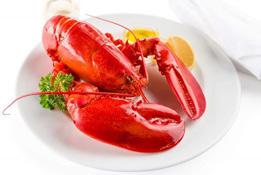
and earned by far the most of all the state’s commercial fisheries at almost $388.6 million. The per-pound value of $3.97 was on par with the average boat price of the decade prior to 2021, but a significant reduction from the all-time high that year of $6.71 per pound. The result was an overall value decline from 2021 of $353.6 million.
“Maine’s lobstermen were facing tremendous uncertainty about their future last year over pending federal whale regulations, compounded by the high costs for bait and fuel,” said Governor Janet Mills.
“Yet they still brought to shore
nearly 100 million pounds of quality Maine lobster, which reflects this industry’s resilience when confronted with a difficult and dynamic economic environment.”
On the strength of a perpound increase of nearly $300, Maine’s elver harvesters earned $20.2 million in 2022 placing it as
the state’s second most valuable commercial fishery. The value of Maine-caught elvers reached $2,131 per-pound, which has only been exceeded twice in the history of the fishery.
Soft shell clams netted Maine harvesters close to $16.7 million.
Maine scallops achieved a value of $8.7 million, one of the highest in the history of the fishery.
“The work of our harvesters, dealers and processors to sustain our resources and deliver the world’s best seafood is something for all Mainers to take pride in,” said DMR Commissioner Patrick Keliher.
The EU’s fishing industry is highly disappointed that the Northeast Atlantic coastal states, despite intensified efforts over February and March, again failed to successfully conclude their negotiations on a sharing agreement for the mackerel fishery, according to representative body Europêche.
With talks now not being resumed before the end of September, Europêche said there’s a risk of some parties again setting excessive unilateral quotas which would lead to another year of catches exceeding the total allowable catch that has been set in line with scientific advice.
It is therefore urging the European Commission and Council to take concrete action and make use of the instruments at their disposal, such as trade measures.
Parties had set themselves a deadline of 31 March 2023 to reach an agreement on the allocation of Northeast Atlantic mackerel quotas. They held three further rounds of consultations during the months of February and
March in London and Nuuk (Greenland), but to no avail.
EU pelagic fishing industry spokesperson Tim Heddema commented: “Unfortunately, in these negotiations there seems to be a distinct lack of constructive diplomacy, with tactics of antagonising predominating over relationship building. While we commend the efforts of the European Commission on behalf of the EU, it is our understanding that other parties did not want to engage in a final push towards a deal, leading to a premature end of the final round in the last week of March. We’ve seen parties act in an almost Trumpian way, over-asking significantly while blaming others to be too ambitious. It also appears difficult to exclude the flawed, one-dimensional criterion of zonal attachment, promoted by some coastal states, from the discussions.”
In the absence of an
agreement, the industry in the EU is also calling on parties who have in recent years set inflated quotas for themselves not to repeat this unsustainable and unacceptable behaviour. It also urges the Commission and the Council to act decisively if such a situation occurs, for example by using its power as the main market for the other coastal states’ seafood exports.
Heddema said the concerns of other stakeholders like processors, retail and sustainable fisheries certifiers are legitimate, but that they would do well to recognise the responsible fishing behaviour of the EU and the UK, who have stuck to the shares agreed in 2014 by the main coastal states.
“This has been a factor in the resilience of the stock, which in scientific terms has suffered overfishing but is not overfished, meaning biomass is still within safe limits. What we need now is an all-inclusive agreement, between all six coastal states, respecting real track records, not those artificially and irresponsibly increased. Any more delay will heavily affect the fishing opportunities and market position of EU fishers. The EU industry will continue to fish sustainably and to engage with all involved, to help protect this valuable resource,” he said.
Northeast Atlantic coastal states have also been slammed by the North Atlantic Pelagic Advocacy Group (NAPA) for failing to meet their own deadline of 31 March to agree shares of the mackerel catch.
NAPA, which represents some 60 global retailers, foodservice companies and other supply chain stakeholders is now asking what it will take for these coastal states to meet their own sustainability commitments. It highlighted the Northeast Atlantic mackerel fishery has been subject to overfishing since 2009 and that no concrete steps had been taken to rectify the “fundamental management flaws” that are fuelling the problem.
Over the last decade, negotiations between the seven parties have routinely broken down, with them instead looking to maximise their individual shares, NAPA said.
In 2019, Marine Stewardship
Council (MSC) certification was suspended from the mackerel fisheries due to poor governance and inadequate management.
NAPA was established in 2020 to use market pressure to drive the coastal states to put aside their politics and instead collaborate to ensure catches don’t exceed sustainable levels. It has since established a fishery improvement project (FIP) with a three-year deadline (to 2024) and published individual consequences of failure – ranging from reviewing sourcing to walking away.
The coalition said it felt that some progress was being made during the coastal states’ annual talks last year, with the parties setting themselves the end of March deadline to reach a final agreement on the sharing of mackerel quotas.
If this had been achieved, it would have meant a collective agreement on allocations that, when summed together,
wouldn’t exceed the sustainable catch level for mackerel recommended by scientists.
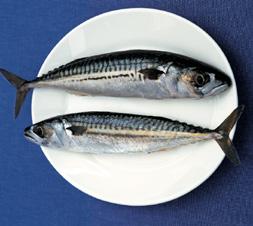
Three meetings were scheduled in the first-quarter of 2023 to achieve this goal. At the first meeting, each delegation stated their commitment to reaching a sharing agreement and there was an acknowledgement that no party will get 100% of what it was asking for. However, NAPA said the second meeting was back to the “old ways of fingerpointing and obduracy”, and the third meeting concluded “with a whimper” on 30 March, with the meeting’s report noting the coastal states “required more time to reach a comprehensive and inclusive set of arrangements”.
NAPA said a direct consequence of this outcome is that the NAPA FIP for mackerel and herring will be downgraded to a D rating and this may well have serious implications for its
members who have committed to only purchasing from FIPs rated A-C.
“We had thought that Northeast Atlantic mackerel was being taken seriously by the coastal states, and their self-imposed “hard deadline” would stimulate agreement on catch shares. But once again the market, and the consumers they serve, are left frustrated and disappointed. The obstacles are wholly political. The solution lies entirely with the coastal states and their willingness to reach agreement. Their own lofty commitments to sustainable fishing are worthless in the face of this outcome,” NAPA Project Lead Dr Tom Pickerell said.
NAPA pointed out that all the coastal states catching Northeast Atlantic pelagics have agreed to uphold the Sustainable Development Goals (SDGs), including SDG 14: Life below water.
The total volume of fish produced by Iceland’s aquaculture industry decreased by 1,796 tonnes in 2022 to 51,350 tonnes. However, 43,064 tonnes of fish exports earned more than ISK 48.8 billion. In the previous year, its export volume and value totalled 38,832 tonnes and less than ISK 36.2 billion.
Homegrown Shrimp USA has officially opened its first shrimp farming facility in the United States. The RAS farm in Indiantown, Florida, produces Pacific white shrimp (Litopenaeus vannamei) and includes a hatchery established five years ago that has been producing and selling postlarvae shrimp to farmers in several countries around the world.
Unibio International PLC has confirmed that privatelyowned petrochemical company Saudi Industrial Investment Group has signed an agreement to invest approximately US$70 million in the Danish protein tech company.
The Ainan Fishery Cooperative Association, which produces red seabream, has become the first facility in Japan to achieve a Best Aquaculture Practices certification.

A new study has identified 55 global ‘paper parks’ or MPAs that fall short of safeguarding marine biodiversity, especially where fishing is concerned.
The Paper Park Index (PPI), developed by researchers at the University of British Columbia’s Sea Around Us initiative, shows that most of these paper parks are located in Latin America and the Caribbean.
“Due to the growing number of MPAs and the expansion of unrealistic and idealistic conservation targets, we believe that more transparent information on the actual protection that they provide to marine ecosystems is necessary,” said Veronica Relano, lead author of the article that presents the new index.
Countries such as Venezuela topped the list with more than one national park allowing unregulated fisheries in
restricted zones. Southeast Asia, Oceania and the Indian Ocean are also regions where MPAs fail to fulfil their objectives.
To develop the index, Relano and co-author Daniel Pauly, principal investigator of the Sea Around Us at UBC’s Institute for the Oceans and Fisheries, polled over 3,000 people considered stakeholders within their sample, which included at least one marine protected area for each coastal country in the world.
Fishers, NGO staffers, civil servants, academics and journalists were emailed a singlequestion survey asking them to rate the level of fishing they thought occurred in a specific MPA in their country’s waters.
The average answer for each MPA, ranging from one, or ‘no fishing, to four, or ‘very intense fishing,’ was then matched with the International Union for
Conservation of Nature’s (IUCN) categories for MPAs.
“In other words, the Paper Park Index is the difference between the average fishing intensity indicated in the responses to our questionnaire and the IUCN category level. We also compared our results to the level of protection listed in the Marine Protection Atlas,” Pauly said.
“For example, if most respondents indicated ‘moderate’ or ‘very intense fishing’ for an MPA officially designated as ‘no-take,’ we might be dealing with a potential ‘paper park’ or a misfunctioning MPA that is at risk of being a ‘paper park,’ depending on the PPI scale.”
Northeast Atlantic spurdog fishing returned to UK waters on 1 April after the latest data revealed the stock is recovering. Spurdog (Squalus acanthias) – also known as picked or spiny dogfish – typically inhabits UK waters. Fishing has been prohibited in UK and EU waters for around five years to enable stocks to recover. But now, following a recently updated scientific assessment, the International Council for the Exploration of the Sea has advised the stock is recovering and landings of spurdog can be supported during 2023 and 2024.
“Through the management of spurdog as a prohibited species, we have enabled stocks to recover to the point where our fishing industry can once again fish this species commercially on a sustainable basis,” explained UK Fisheries Minister Mark Spencer. “We will continue to use the latest scientific advice and monitor stocks to ensure appropriate management measures are in place to protect the species.”
Catch limits for 2023 have been agreed between the UK and EU with the former allocated 2,781 tonnes in the
North Sea and 4,825 tonnes in western waters. Restrictions on landings of fish over 100 cm remain to prevent the targeting of breeding females.
North Sea spurdog quota will be shared between the England, Scotland, Wales and Northern Ireland using existing fixed quota allocation units. Western spurdog quota will be kept unallocated and managed by monthly tonnage limits in UK vessel licences. A reserve of 25% of the North Sea quota will be held by the UK government, with a decision on allocating this to be made later this year.
The downgrading of Northeast Atlantic mackerel from a green to an amber rating in the Marine Conservation Society’s (MCS) latest Good Fish Guide has been condemned as “overly harsh” by the Scottish Pelagic Sustainability Group (SPSG).
The pelagic industry organisation said that while the amber classification under the MCS traffic light system means that mackerel is still an “OK choice” for consumers to buy, the species should have retained its green status given the current scientific status of the stock.

It said the most recent advice from the International Council for the Exploration of the Sea (ICES) is that the stock biomass
is 3,769,326 tonnes which is 46% higher than ICES’ maximum sustainable yield (MSY) value of 2,580,000 tonnes, and that when the stock is above the MSY level it’s considered capable of being sustainably harvested.
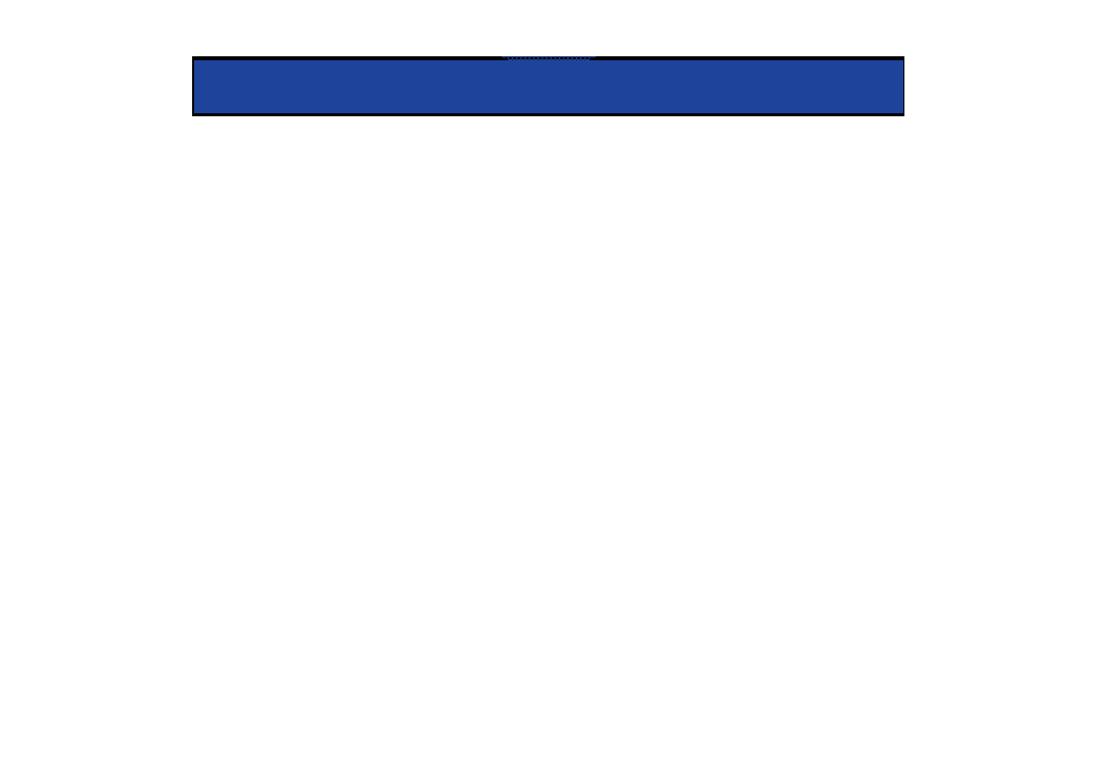
“MCS states that the stock has declined since 2015, which is true but needs to be put into context,” SPSG Chairman Ian Gatt said. “The scientific assessment of mackerel goes back to 1980, the 2015 stock biomass was the highest recorded in the 40-year study period at almost 6 million tonnes. It’s clear that the ecosystem cannot carry that biomass of mackerel, therefore, the stock is back to above average levels. It is not true to say the stock continues to
decline as it has been stable over the last couple of years. What’s also clear from the advice is there is a large influx of juvenile fish (recruitment) coming into the stock. This has been witnessed by our fishermen on the grounds.”
Gatt said MCS has chosen one matrix to say the stock
n Scottish mackerel fishermen are engaged in a range of science projects and sampling programmes to enhance the understanding of the stock and to ensure long-term sustainability, says SPSG is overfished which is fishing pressure but has “completely ignored the fact” the stock biomass is 46% higher than ICES scientists’ assessment of MSY.
Despite this year’s devasting earthquake, the European country remains focused on increasing its domestic fish catch and its exports, writes
Eugene GerdenThe 6 February 2023 earthquake that shook Turkey and neighbouring Syria and took tens of thousands of lives massively disrupted the Turkish seafood industry, with the immediate suspension of all fishing and aquaculture activities, but the country remains steadfast in its resolve to implement ambitious plans geared towards raising both its domestic fish output and its exports this year.
Turkey’s trout production heartland – Kahramanmaraş province in the southeast of the country – was at the epicentre of the earthquake. According to calculations made by Kahramanmaraş authorities, the earthquake ked to a 40% drop in the region’s fish production. Historically, the area has produced up to 17 million tonnes of trout per year, with its exports going to 54 countries.
Kahramanmaraş Fishermen’s Association President İbrahim Sarı confirmed that approximately 14 facilities were damaged and that the trout production will decrease to 10 million tonnes this year. Sarı pointed out that Turkey’s largest trout processing facility is also located in Kahramanmaraş.
“The fish produced here are supplied around the world, especially to Qatar, Russia, the Netherlands and Arab countries. After the earthquake, our fish farming and processing facilities were affected the most,” he said.
Sarı told WF that the Fisheries Ministry is working on restoring operations.
“We are trying to bring Kahramanmaraş back to normal life in terms of fishing. Mass deaths occurred with the water cut off in all land facilities. In order to bring it back to normal, we will try to raise it above the level it is with small reinforcements and support every year.”
According to Sarı, the target is for Kahramanmaraş to produce 20 million tonnes of trout in 2024.
With seas on three sides, Turkey has a coastline of 8,333 km. Most of its fish activities are conducted in the country’s territorial waters of the Black Sea, Aegean Sea,
the Mediterranean, in the Sea of Marmara and the straits of Bosphorus and Dardanelles. About 100 fish species with an economic value are caught in the country.
Approximately 60% of Turkey’s catch is accounted for by anchovies, 8.1% are sardines, 7.4% are mackerel and 8.7% is made up of other species such as bonito, sprats, haddock, bream mackerel and bluefish.
In recent years, Turkey has significantly progressed its aquaculture sector and its further growth will be a priority for the country’s national government in years to come. This was recently confirmed by representatives of the Turkish Ministry of Agriculture and Forestry, which plans to create conditions for further increases in both the output and the regions supplying domestically-farmed fish.
Meanwhile, state subsidies to more than 800 Turkish aquaculture farms has totalled TRY 1.64 billion (approximately US$ 160 million) and there’s a strong possibility this support will continue.
In terms of farmed species, Turkey has become the world’s leading producer of seabream and seabass, and ranks second in the production of rainbow trout. Its aquaculture sector also provides direct employment for 40,000 people.
Thanks to state support, aquaculture production in Turkey grew from 61,000 tonnes in 2002 to approximately 514,000 tonnes in 2022. Exports, meanwhile, grew from 27,000 tonnes in 2002 to 251,000 tonnes in 2022, and from $97 million to $1.7 billion in value terms.
However, due to the earthquake, these figures will be significantly lower this year.
The government also has plans to further develop the Turkish Trout Project that started in 2017. This is aimed at promoting the “Turkish Trout” brand throughout the world and boosting the popularity of salmonid farming in the country.
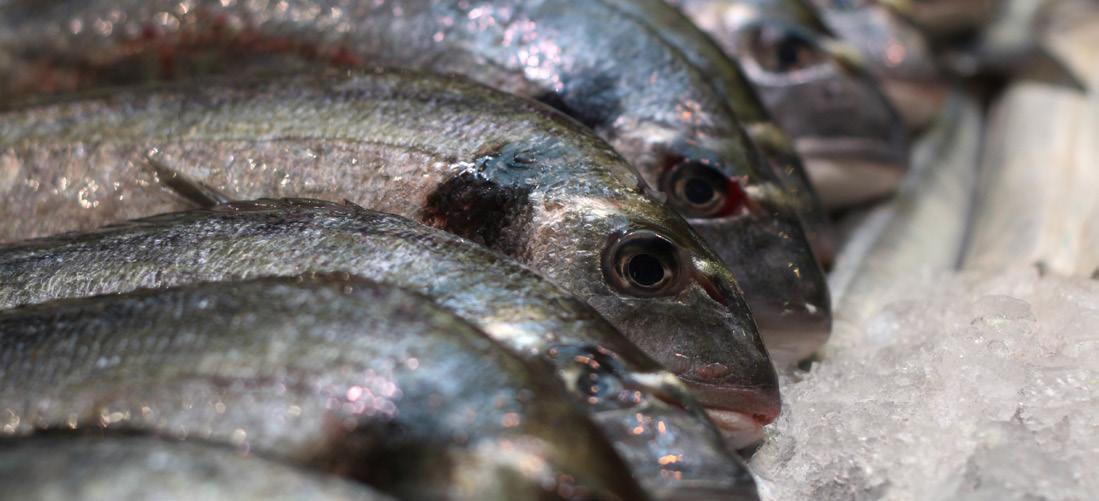
According to the country’s Ministry of Agriculture, Turkey’s production increased from approximately 5,000 tonnes in the 2000s to almost 31,500 tonnes in 2021 and
n Turkey has become the world’s leading producer of seabream and also seabass
45,000 tonnes in 2022. That helped lift exports from $56.8 million in 2020 to $130.9 million in 2021 and $312.3 million in 2022.
Overall, Turkish aquaculture exports exceeded $1.5 billion in 2022, with 70% of the trade accounted for by Aegean companies.
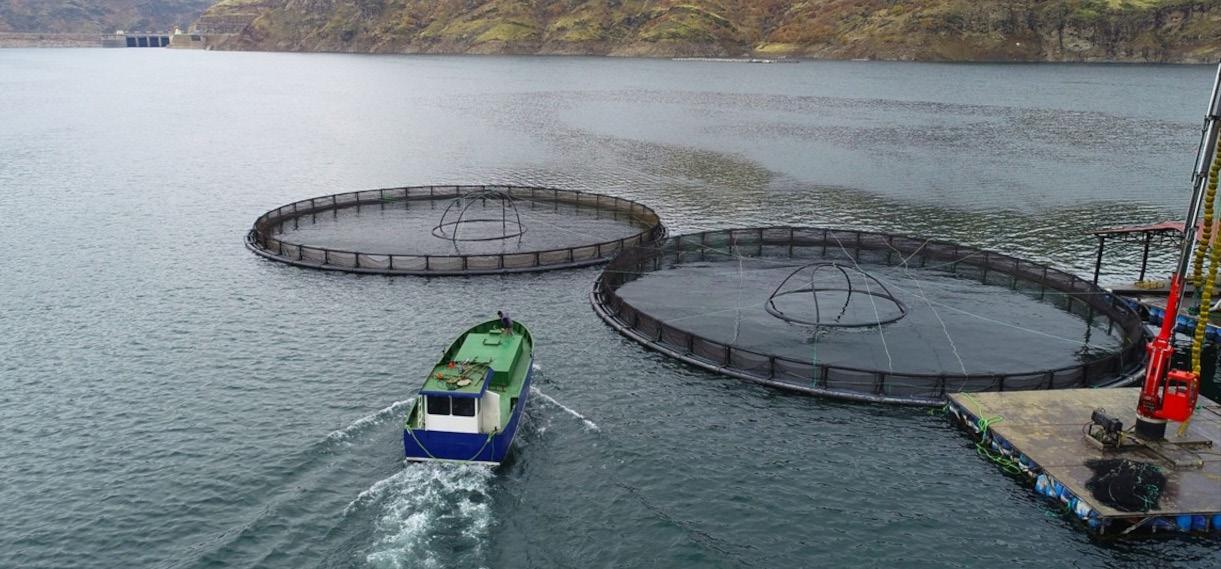
Minister of Agriculture and Forestry Vahit Kirişci said the government will continue the support the domestic fishing industry while also protecting domestic fish stocks. Kirişci also expects the country’ aquaculture exports to reach a value of $2 billion, although this target could be missed due to the earthquake.
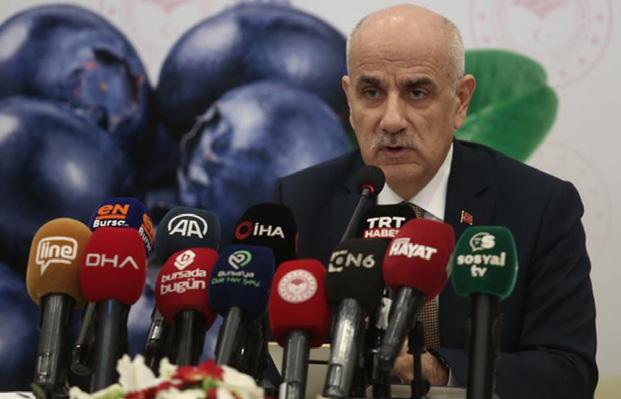
million in the second-half of 2023, commemorating the 100th anniversary of our Republic,” Kirişci said.
As for protection, so far, a total 87 conservation areas have been created for the protection and sustainability of fisheries stocks. Particular attention is also being paid to combating poaching.
The Turkish government also plans to create conditions for the restoration of anchovy exports – the country’s main fisheries species. Its overriding hope is that increases in domestic fish production and catches will lead drive up the country’s currently low fish consumption. Per capita fish consumption fluctuates between 8-10 kg, and the main reasons for this trend have been identified as the low purchasing power of local citizens, the relatively small domestic production and high prices.
As a rule, most of the seafood consumed in Turkey is fresh fish. The Black Sea accounts for 76% of Turkey’s fish production, especially anchovy, and the Sea of Marmara provides 10% of the catch. However, since 2007, Marmara has faced algal bloom challenges, and there have been large fluctuations in the Aegean Sea catch.
As a rule, fish grown in Turkish waters are exported to more than 100 countries, primarily the European Union, but also Japan, the United States, Russia and South Korea. Kirişci also confirmed that in the last 20 years, state support to domestic fisherman and aquaculture companies has exceeded TRY 20 billion, most of which went to small-scale fisheries and fish farms and primarily to cover production costs, fuel etc.
Fisheries support
Looking ahead, Turkey plans to increase its fishing activities in international waters. Currently, around 70 vessels are operating in the territorial waters of other countries, mainly in Mauritania, Guinea Bissau and Georgia. Annual earnings from these operations have fluctuated between $400 and $600 million.
Furthermore, as part of state plans to protect domestic fisheries resources, at least 15 different fish species have been released into Turkish waters in recent times.
“That were mainly halibut in Southeast Anatolia, grouper, seabass in the Mediterranean, seabream and seabass in the Aegean, turbot, sturgeon and natural trout in the Black Sea. We are one of the most proficient countries in terms of fishing with different species. We released approximately 84 million juvenile fish, one for each of our citizens in our waters 2022. Hopefully, the amount of fisheries will be 100
With regards to the country’s fleet, prior to 2002, the Turkish fishing fleet had been steadily growing, but since the 2010s, Turkish fisherman have preferred to operate larger trawlers. As of 2011, the Turkish fishing fleet has consisted of about 30,000 vessels.
We are trying to bring Kahramanmaraş back to normal life in terms of fishing
İbrahim Sarı, Kahramanmaraş Fishermen’s Associationn the Turkish province of Bingöl n The Turkish Minister of Agriculture and Forestry Vahit Kirişci Photo Credit: iHA Photo Credit: Dunya
Farmed Atlantic salmon has long-transcended the wider seafood category, but its challenges are stacking up, writes Jason
Hollandn Despite supply challenges, Asia accounted for 15% of total global Atlantic salmon exports
As a food, farmed Atlantic salmon is a special fish. Highlyprized across traditional and new seafood markets, the unwavering growth in consumer demand for salmon has shown little sign of flagging. Its considerable global uptake is largely attributable to its healthy profile, which itself is underpinned by a high protein and omega-3 fatty acid content, as well as being a key source of important vitamins and minerals.
Thanks to a supply that has grown by more than 400% in the past 25 years, farmed Atlantic salmon has grown to be the world’s most widely available salmon product. It’s also one of the top three most popular seafoods in the western world. Consumption has also been rising at a rapid rate in many other regions, as it successfully competes with other proteins, including beef, pork and poultry.
Led by the producing nations of Norway, Chile, Scotland and Canada, the global market for this fish is today valued at several billion euros, with recent calculations putting total sales at well over €20 billion. Much of its strength has stemmed from its ability to capitalise on emerging food trends with relative ease such as sushi and poke.
Meeting this demand with raw materials has also been crucial. Tom-Jørgen Gangsø, Director of Market Insight with the Norwegian Seafood Council (NSC), told the recent North Atlantic Seafood Forum (NASF) 2023 conference that over the past 10 years, the Atlantic salmon industry’s volume had grown by 30%, with Norway’s own production up 32%.
With regards to export markets, he confirmed Asia had grown its salmon purchasing by 34% since 2013, with its biggest Atlantic salmon markets of China, Korea and
Thailand experiencing “huge growth” in the period.
Last year, the region accounted for 15% of total global Atlantic salmon exports. This was achieved despite market access challenges, transportation issues due to the war in Ukraine and pandemic-related shutdowns, Gangsø said, highlighting that the closed airspace over Russia meant that exports to Japan and South Korea were down in 2022.
“Overall, exports were quite solid in 2022, but I think the numbers would have been higher if it wasn’t for the war in Ukraine.”
According to Gangsø, Norway has experienced the highest growth in volume, but Australia has established a remarkable growth rate, especially with regards to putting volumes into China and Indonesia.
“South Korea, China and Thailand are also outpacing the average market growth. We believe that Asia will become even more important, but it depends on the market access.”
The key to growing Atlantic salmon markets is having a strong position in the minds of consumers, and efforts to “reach more people, more often” should include offering convenient products and the development of new formats, Gangsø said.
“We believe that salmon has few substitutes and that it will be strong in the market for many years to come.”
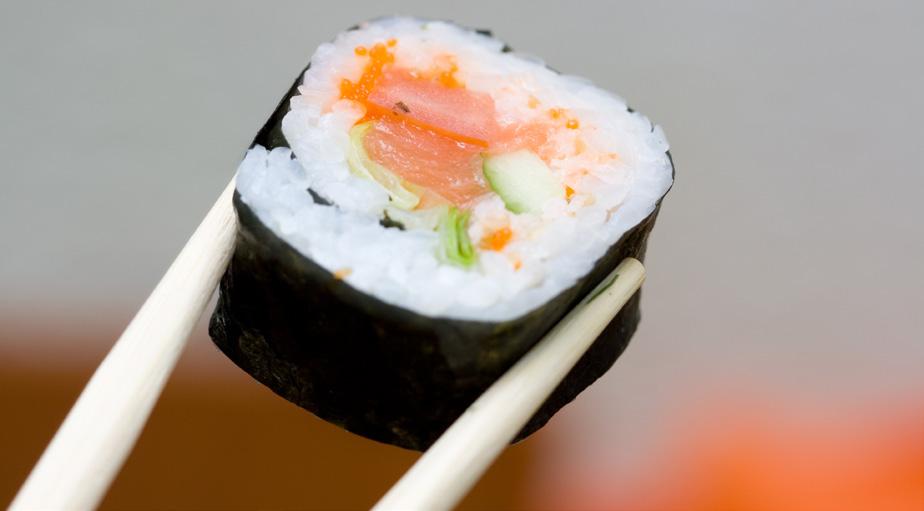
However, the salmon farming industry is certainly not without its challenges. It’s long been recognised that conventional cage farming in coastal zones offers only limited scope for further production growth, mainly due
to the licensing constraints put in place by regulatory authorities and also because of very costly biological challenges such as sea lice. It has also been identified that feed is another potential limiting factor – specifically access to the ingredients traditionally used in salmon diets that are sourced from capture fisheries.
Solutions to both issues are actively being sought, such as new technologies and techniques that produce the species in closed containment systems, either on land or in remote offshore locations, and R&D focused on delivering new feeds via alternative or novel ingredients.
With the overall supply levelling off, these innovations and their acceleration can’t come quick enough for producers and consumers alike.
Resource tax concerns Kontali projects this year’s global supply will grow by slightly less than 2%, which will return it to the level seen in 2021.
Assuming there are no biological issues or unexpected events that cause a production decline, it has forecast global production will be just over 2.9 million tonnes. Of this, Norway is expected to increase production by 3% to more than 1.5 million tonnes and Scotland’s harvest will rise 8% to 183,000 tonnes, but Chile and Canada will experience declines of 2% and 5% respectively to 739,000 tonnes and 128,000 tonnes.
“But this year-on-year growth is dependent on an increase and improvement in productivity levels and yields in the second-half of 2023,” Nystøyl said.
Demand will remain strong in 2023 – riding out broader economic issues such as lower disposable incomes, but that isn’t to say that for some consumers choosing salmon will no longer become viable – they will down-trade, NASF heard.
Ragnar Nystøyl, CEO of research group Kontali, told NASF 2023 that there was a significant value growth in the farmed Atlantic salmon sector last year, as a result of the record-high prices seen in the market, the actual supply decreased by 1%.
Nystøyl highlighted that the 6% volume decline seen in the first-half of 2022 was a level that hadn’t been seen before.
Europe saw no growth supply in the second half, and going into 2023, Kontali’s estimated that the region’s biomass was 2% lower than last year. At the same time, the Americas’ biomass was 7% lower, and this was on top of a decline in 2022.
For both regions, this trend could be partly attributed to flat aquafeed sales, Nystøyl said.
Norway’s Atlantic salmon farming sector is also likely to see further disruption as a result of government plans to introduce a new resource tax for salmonid farming operations. Announced in September 2022, the initial proposal sought to place a 40% resource tax requirement for all salmon and trout farms harvesting 5,000 tonnes or more per year, with the government wanting to divert a portion of the monies generated to improved social infrastructure, particularly for the coastal communities that accommodate aquaculture. This new tax would be on top of a 22% corporation tax.
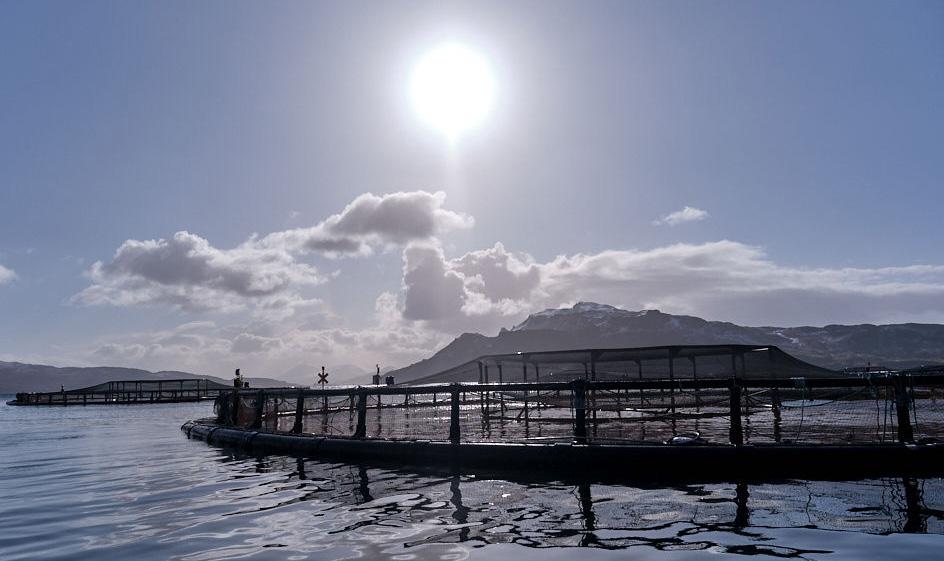
At the time of writing, the proposal had been adjusted with a 5% lower tax level. Nevertheless, observers have estimated that expansion plan investments amounting to some €3.5 billion have already been mothballed by unhappy producers, while €4.4 billion immediately disappeared off industry share prices. The proposal needs to be approved by Norwegian parliament, with the industry expecting final clarification before the summer.
n Kontali has forecast the global production of Atlantic salmon will be just over 2.9 million tonnes in 2023
We believe that salmon has few substitutes and that it will be strong in the market for many years to come
Tom-Jørgen Gangsø, Norwegian Seafood Council
It’s hoped the newly-agreed UN High Seas Treaty will expedite a sea change for ocean protection, but for the time being, international waters remain open and exposed, writes
Jason HollandOn 5 March 2023, after around 36 hours of intense negotiations in New York, a breakthrough deal to protect international waters and their marine life from a multitude of activities was agreed by close to 200 countries. A key measure within the United Nations’ High Seas Treaty is to provide a legal framework to put two-thirds ofthe ocean that lies outside nationalboundaries and jurisdiction into marine protected areas (MPAs), with the aim to help achieve the goal of protecting 30% of the world’s oceans by 2030. This was agreed at the 2022 UN biodiversity conference. Currently, just 1% of the high seas have protection in place, which makes them more at risk from such threats as climate change and overfishing.
Delivery of the MPAs will allow activities to continue in these areas on the proviso that it’s consistent with conservation objectives, and therefore doesn’t damage marine life. This could see limits put on certain fishing activities, as well as shipping routes and exploration efforts like deepsea mining.
Alongside the MPAs, the treaty will also require environmental impact assessments (EIAs) of oceanrelated human activities, the sharing of marine genetic resources (MGRs) that can be used in pharmaceuticals, food and other areas that benefit society, and funding and technical support for developing nations. A Conference of Parties (CoP) to provide monitoring and accountability will also be established.
Agreed after two decades of talks, the treaty has been hailed by many. UN Secretary-General António Guterres called it “a victory for multilateralism and for global efforts to counter the destructive trends facing ocean health, now and for generations to come”, while EU Commissioner for
the Environment, Ocean and Fisheries Virginijus Sinkevičius described it as a “historic moment for the ocean”.
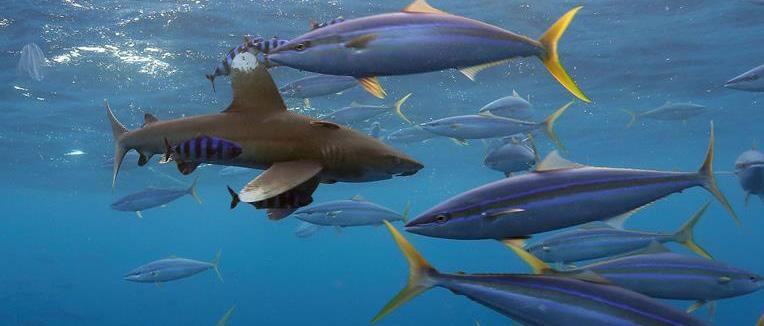
On the seafood supply chain side, UK body Seafish’s Director of Operations Aoife Martin commented: “We know that illegal, unreported and unregulated (IUU) fishing occurs on the high seas – those areas not within any one nation’s control or supervision…This High Seas Treaty will mean that, for the first time, the same levels of marine protection that exist inside UK waters will now also apply on the high seas.”
There is of course a “but”. Before the new treaty takes effect, countries will need to meet again to formally adopt the agreement. It will only enter into force once 60 countries have signed up and legally passed the legislation in their own countries. Signatory countries will then have to start looking at how these measures can be practically implemented and managed. Such endeavours could take years.
n The new treaty will provide a legal framework for establishing a vast network of MPAsWithout agreements in place you can have overexploitation of stocks, you can have overfishing, and in a worse-case-scenario you can have stock collapse
Erin Priddle, MSC
This presents a window of opportunity for those who would seek to continue or start exploiting these areas before the treaty comes into effect – something that has already been flagged up by observers. With the timings for ratification and implementation of the treaty yet to be set, fisheries governance pressure group Accountability.Fish is among those calling for international fisheries management bodies to urgently act to keep industrial fishers from “pulling a fast one”. The US-based organisation’s Global Director Ryan Orgera also suggested regional fisheries management organisations (RFMOs) could give overfishing a green light until they are forced to do so by the treaty.
According to Accountability.Fish, red flags in this regard include the extent to which industrial fishing interests were involved in fighting a UN agreement, and the fact that many RFMOs have policies that discourage outside observers from attending deliberations and decision-making.
“Without robust oversight, there’s every reason to believe that the RFMOs will let overfishers cash in before the treaty comes into effect,” Orgera said. As such, Accountability. Fish wants to open the decision-making processes of all RFMOs to a level equal to those of member countries like the United States, France, Canada and New Zealand.
Essentially created by the 1982 UN Convention on the Law of the Sea, RFMOs are the primary body responsible for managing how fisheries operate on the high seas. These 17 international bodies (including five for tuna) were primarily set up to focus on the target species that many member governments wish to fish for in the high seas, but with an obligation to conserve marine resources.
The role these RFMOs play in the current and future management of international waters was the subject of a recent Blue Deal Debate on ending high seas overfishing, organised by the Marine Stewardship Council (MSC). In the forum, it was highlighted many tuna stocks are now doing well as a result of RFMO best-practice measures, with Victor Restrepo, Chair of the Scientific Advisory Committee with the International Seafood Sustainability Foundation (ISSF) confirming that 85% of today’s global tuna catch comes from stocks deemed “healthy”.
It was also confirmed that where problems have tended to arise in the high seas is when exploitation has been very high – often due to a race-to-fish strategy or when highlyvulnerable species have been targeted.
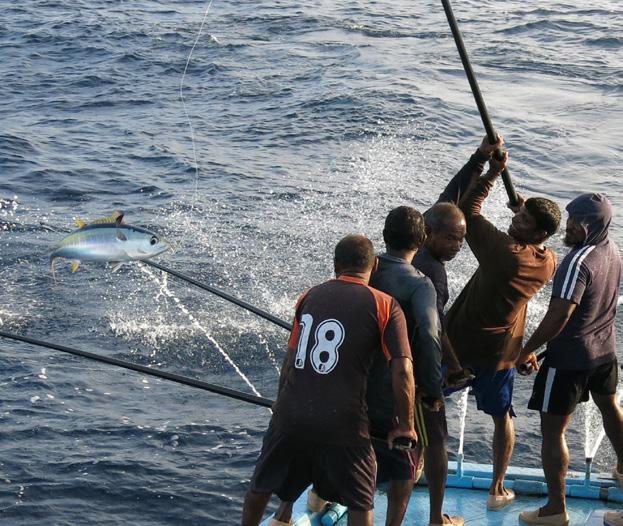
Where there are exceptions to the healthy status, stocks and fisheries would benefit from better management, MSC Chief Science & Standards Officer Dr Rohan Currey told the debate. He also said that some of the upturn, particularly in the Pacific region, can be attributed to MSC’s expectation that fisheries wishing to be certified must have harvest strategies in place, including a management system that responds to stock performance.
“We have seen a number of fisheries management authorities associated with tuna – the big RFMOs – start to look at this quite seriously, and most notably over the latter part of last year, we saw the adoption of a couple of really important measures. One of these focused on Atlantic bluefin tuna in ICCAT [International Commission for the Conservation of Atlantic Tunas], and most recently for skipjack in the Western & Central Pacific Fisheries Commission [WCPFC] – the largest skipjack tuna fishery on the planet,” Currey said.
But it’s a much different story with the Northeast Atlantic’s shared stocks, managed by the North East Atlantic Fisheries Commission (NEAFC) RFMO, acknowledged Erin Priddle, MSC North Europe Regional Director, who said that in just four of the last 25 years, the region’s important blue whiting, mackerel and Atlanto-Scandian herring have had management strategies for in place.
“Without agreements in place you can have overexploitation of stocks, you can have overfishing, and in a worse-case-scenario you can have stock collapse. We actually saw this with the Atlanto-Scandian herring stock back in the 1960s. We don’t want to see that again,” Priddle said.
What’s happening in NEAFC, she explained, is that on a national level, coastal states are setting total allowable
n Developing countries will be supported in their implementation of the new treaty
catches (TACs) in line with what they feel the pressure on the stock should be, but when all the TACs are combined, the total is far beyond the overall scientific advice from the International Council for the Exploration of the Sea (ICES).
“What we’ve seen in recent years is that there’s been overexploitation of mackerel, for example, of 40%. So, while the biomass of these stocks are relative okay, the stocks cannot withstand this sustained pressure of overexploitation without having some level of risk applied to them. Without management in place, the risk of stock overexploitation, and potentially overfishing is taking place.”
Priddle informed the debate that all seafood supply chain stakeholders have the same goal – to see healthy, thriving marine stocks, natural resources and healthy habitats. She added that RFMOs “have a huge role to play” in achieving this.
And while in the case of NEAFC pelagics, the supply chain is seeing national interests override the prevailing objectives of sustainability, other RFMOs have successfully “pulled through”, she said.
Just because it’s on the high seas doesn’t mean it’s completely lawless
Dr Rohan Currey, MSC
Fisheries management is really hard; it’s a multifaceted job with many components
Victor Restrepo, ISSF
Key to moving this forward will be pressing RFMOs to adopt transparent decision-taking so that policymakers no longer avoid public scrutiny and can be held to account for the decisions they take, the forum heard.
There should be greater transparency around compliance, Currey said. “I think a lot of RFMOs are set up to achieve a certain objective, they have a lot of the right tools in place to go about achieving that, but we are not always seeing outcomes being delivered. But transparency equips us with better knowledge of where gaps exist, which then enable actors to keep analysing and working to improve those things.”
He added there’s an expectation that if RFMO members are sending flagged vessels to fish in a certain area there’s also an obligation for them to make sure those vessels are following the law that they should have put in their legislation.
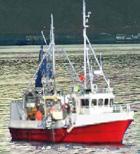
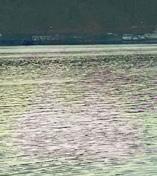
“Just because it’s on the high seas doesn’t mean it’s completely lawless. So, if people are acting in that manner, that means those flagged-states who have sent them are letting things slide. This is why compliance needs to be transparent. It’s the only way you can hold these individual actors to account.
“The more transparency there is, the easier it is to do that. The difficulty comes when these things are shrouded in mystery,” he said.
Enforcement is also important, said Restrepo, although he added that doing this on the high seas can be very difficult, particularly for developing nations.
“They are a very important part of the RFMOs. ICAAT has something like 54 members and most of them are
developing coastal states. But they don’t have the same resources as the EU or US, for example, would have to carry out enforcement.
“Fisheries management is really hard; it’s a multifaceted job with many components. It’s not as simple as some people would like to see – there’s no simplistic, silver bullet solution,” he said.

With regards to the new High Seas Treaty, Currey said member governments are still at the very early stage of working out precisely what it will mean in practice, but he believes there could be an interaction between the treaty and the way RFMOs continue to work.
“As the process evolves, one of the things I would be encouraging governments to think about is how they see this actually working, and how they can engage with the stakeholders who will be affected by it to make it effective, because I would be very concerned about seeing this instrument that was created with the intent of trying to be holistic just turn into something that imposes changes without consideration of those that will be affected.
“Equally, I would hate to see it turn into what’s often referred to as ‘paper parks’ where we have marine protected areas that are defined but don’t have concrete objectives or a way of delivering an outcome. It’s incumbent on governments to work out what this means in practice and to take that onboard as they try to move it forward. I expect we will see proposals for MPAs arise from this and a number of other initiatives in the coming months and years. It will be fascinating to see as it unfolds.”
The first of two new trawlers for Shetland fishing company 60 North completed its long delivery trip through the Mediterranean and the Bay of Biscay earlier this year, steaming west of Ireland to arrive in time for the annual Up Helly Aa festival
The 24.9-metre Copious LK-985 is to be followed later this year by sister vessel Prolific, replacing older vessels of the same names. The two have been built at the Tehnomont yard in Croatia to a design by Macduff Ship Design.
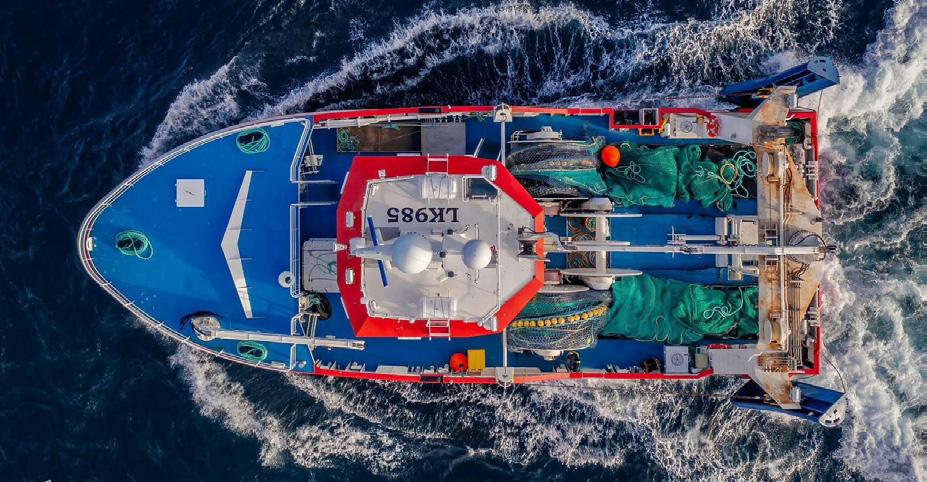
It has been a five-year process since owners Mark Anderson and partners Andrew White, Ryan Arthur and fish selling agent LHD went to Macduff with their ideas for two trawlers to replace their older vessels, bringing with them a clear set of ideas of what they were looking to achieve.
An initial co-operation resulted in a general arrangement and specifications, followed by the build being put out to tender. The winning bid came from Tehnomont in 2020, following which the team at Macduff Ship Design got busy with developing the hull form and the detailed construction and outfitting plans.
Sizing the propeller was central to the design process from the initial stages, as a large-diameter controllable pitch propeller can provide significant economies. The aft section was designed around a 3,000mm Finnøy propeller, turning inside a Kort nozzle, powered by a 588kW Mitsubishi V12 S12R main engine via Finnøy FK50 11.3:1 gearbox. The triple rudder installation and Kort thrusters maximise manoeuvrability.
Over the last few years, Macduff Ship Design has put substantial effort and resources into tank and CFD testing of a number of new vessels, resulting in an in-depth understanding on how the hull form can influence both vessel resistance and seakeeping. According to the yard, this knowledge was applied to the hull design of Copious to ensure the crew would have a vessel that could handle unpredictable conditions in their fishing areas, while also
having optimum efficiency to minimise fuel consumption.
The deck machinery, fishing gear and fish processing equipment layout was given a high priority, as Copious and Prolific need to be able to switch between single-rig, twin-rig and pair trawl gear with all equipment needed for these three operations to be carried on board. The deck machinery configuration was developed with Mark Anderson’s detailed input, including a number of innovative ideas intended to improve both safety and efficiency.
The winch complex is from Rapp MacGregor and is driven by three hydraulic pumps, powered by take-offs on the Finnøy gearbox and electric towing pumps. There are three 14-tonne trawl winches located in the bow section. These have capacity for 1,100 fathoms of 22mm warp, but are initially spooled with 700 fathoms of Brunton Shaw warp supplied by LHD. The winches are managed through a Scantrol autotrawl with a three-speed arrangement of 100%, 80% and 60%.
The twin 20-tonne split net drums aft of the wheelhouse are also linked into the Scantrol system. Rapp Macgregor supplied a pair of hinged pins which are arranged just forward of the stern openings and can be raised or lowered remotely, depending on the fishing method and gear in use.
Copious is fishing with Nordsø Trawl twin-rig gear, a single trawl and a high-lift pair trawl, with codends and extension pieces supplied by Scot Trawl. The combi sweeplines are from Jackson Trawl and the gear is spread by a pair of Thyboron type 32 doors and 2-tonne roller clump.
Marport supplied the gear monitoring sensors, with trawldoor sensors delivering depth, height, distance, and pitch/roll data to the wheelhouse, while a door sounder details the door height over the seabed and trawl sensors are rigged to the headline.
Catch quality is of key importance and although Copious is expected to be working short trips, the layout is designed to be able to support trips of up to ten days. Catches are dropped through the aft codend hatch and pass directly to a hopper to be cooled with water sprays and slush ice.
The fish are gutted and sorted into the two sixcompartment cylindrical, selector/coolers from Carsoe, which slot into a layout designed by Jim Johnson of JJ Measuring Systems. Each compartment can be emptied individually in any order to suit the optimal fish cooling. Once cooled, the fish are transported by conveyor to the fish access hatch and into the hold to a portable table with four workstations.
Fish are graded, weighed and boxed with freshwater and flake ice before being stored in the 1,100-box capacity fishroom.
There are two 2.5-tonne capacity Buus slush ice tanks in the fishroom, which work in conjunction with the pair of 4.5-tonne/day ice machines located on the main deck. The water for the system is supplied from the onboard freshwater tanks and a 2-tonne/day Alfa Laval freshwater desalinator fitted in the engine room.
Accommodation on board Copious is arranged entirely on the main deck, with a changing area with deck WC and shower forward to port, accessible from the processing area. The main living area has two four-berth and two two-berth cabins, with a mess/galley and lounge area aft of the cabins.
The wheelhouse is laid out with the main skipper’s position forward and an aft deck control station. H Williamson and Sons supplied the wheelhouse electronics. The fishfinders are Simrad ES80 and Furuno FCV1900G BB sounders, and the plotting systems are a pair of Sodena Turbowin units, an Olex with ground discrimination module
and a TimeZero plotter with DRS12A-NXT radar module and Wassp F3i 160 sounder.
The FR2228 radar, GP-39 GPS, SCX-21 satellite compass, FA-170 AIS, RD33 heading repeater and BR-500 bridge watch alarm system are all Furuno equipment. The STD 22 gyro compass is from Raytheon and the autopilot is a Navitron NT921G.
The communications package comprises Sailor 6222 DSC and 6248 VHFs, an ENTEL HT649 handheld VHF, Turbosailor VSAT and Furuno Felcom 18 Sat-C, plus a Furuno NX700B Navtex set.
Larsnes Mek Verksted has contracted to build a unique vessel capable of alternating roles as a seine netter for whitefish and a carrier vessel for the aquaculture sector
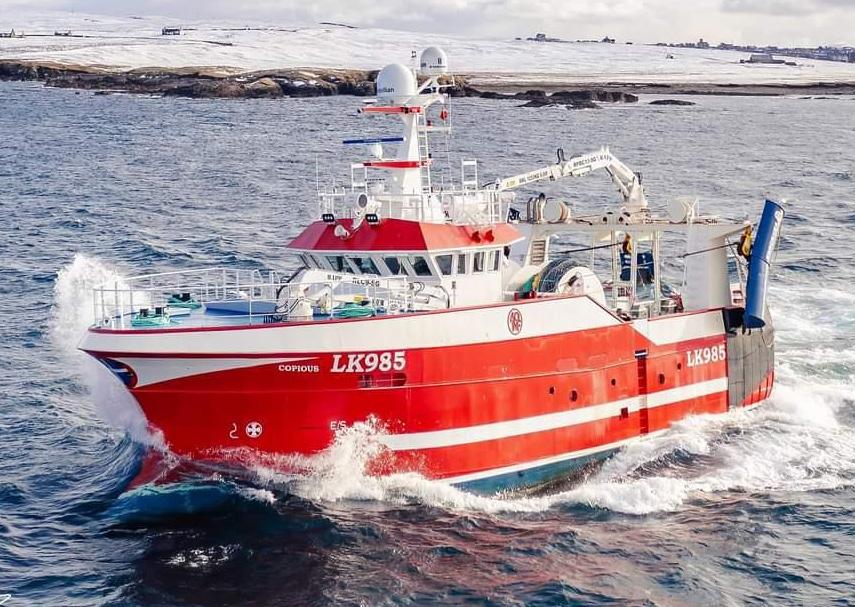
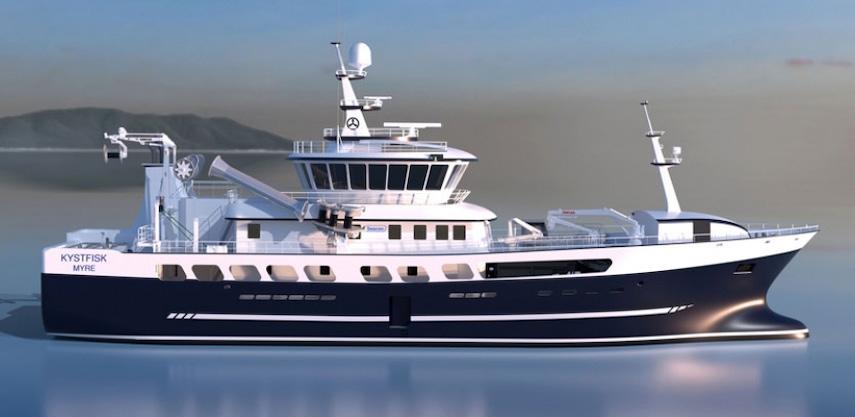
Vesterålen company Kystdrift went to Seacon for the design of its new 50.3-metre vessel, subsequently placing the build order at the nearby Larsnes Mek Verksted yard. The SC-51 design has a 499-cubic-metre capacity and allows it to operate as a seine netter for whitefish during the winter season, while also having capacity to serve as a carrier for aquaculture producers with an Optimar handling deck to slaughter salmon and trout for delivery to processors. The automated handling line will have a 70-tonne/hour throughput capacity.
Kystfisk’s environmentally-aware owners have placed a great deal of emphasis on low energy consumption, through the refined hull design and the choice of systems onboard. The new vessel’s operating pattern is suited to battery operation, so the intention is to include a battery pack, reducing conventional fuel consumption and emissions.
In addition to the optimised hull, the design includes a propeller inside a nozzle, a two-step reduction gear, a variable speed generator, and a fallback ‘take me home’ option, as well as the 1.5mWh battery pack.
Larsnes Mek Verksted has confirmed this is an order worth around NOK 1.1 billion and will guarantee full activity at the yard throughout 2024.
“This is the first newbuild that Larsnes Mek Verksted and Seacon will have worked on together. We are very
pleased to secure the construction of yet another new vessel for Norwegian shipowners at a Norwegian shipyard,” a yard representative said.
“Based on our experience, we know that when the equipment is made in Norway, and by using Norwegian suppliers, it amounts to between 70-80% of the vessel’s total value, and that this also leads to further innovative and technological development, which in turn strengthens competences within the Norwegian maritime cluster.”
A low-ground contact system of rigging trawl gear with lights to improve catch rates in fishing for shrimp (Pandalus borealis) in Arctic waters is showing real promise
Based within the Iceland Ocean Cluster on the quayside in Reykjavík, start-up company Optitog has been making steady progress in developing new concepts of shrimp gear to improve the profitability of this fuel-heavy fishery, while also reducing by-catch levels.
Optitog has been developing its own Virtual Trawl, which uses patented light technology to herd Pandalus borealis off the seabed and into the trawl. Additionally, the development aim is to deliver a trawl system fitted with sensors and a gear-mounted computer that automatically controls the towing vessel’s winches to keep the fishing gear in optimum position.
A steerable foil is used to steer the fishing gear to maintain the required height above the seabed.

“We have been tinkering with this for a while and are getting on top of it now as we’re perfecting the design,” she said. “We have done tests with the Virtual Trawl and the conclusion of these trials was very much that this is something that needs to be continued.”
By skimming a few centimetres above the seabed to scoop up shrimp rooted out of the ground by the lights, Optitog’s trawl has the big advantage of having less than 0.5% ground contact, a serious point in its favour in a commercial environment in which disturbance of the seabed habitat is already a major consideration.
This approach provides an alternative that could get around bottom trawling closures that would affect trawlers towing conventional gear.
“Although we have only tested this so far on Pandalus borealis, we’re looking at the options for using this approach for other species,” Jónsdóttir said, adding that testing this in the shrimp fishery has its advantages, as the high numbers of shrimp per square metre of ground covered make codifying results more precise.
n Optitog’s system of lights to herd shrimp into trawl gear skims the seabed with minimal ground contact
“That’s being kept secret,” said Optitog’s Halla Jónsdóttir, when asked about the specifics of the lighting rig that encourages shrimp to jump or swim into the trawl – but the theory that testing has confirmed is that shrimp will jump or swim in a certain direction when presented with a line or wall of light and herded into the trawl.
So far, the lights system has been trialled with conventional trawl gear on board Icelandic shrimp trawler Klakkur, and Optitog is also working with fishing companies in Norway and the Faroe Islands as it aims to make a proprietary system a reality – dispensing with trawl doors to reduce towing resistance and therefore fuel consumption and emissions of greenhouse gases per kilo of catch landed.
“We can see that it won’t be effective for species such as halibut that dig themselves into the seabed, but there are indications that it could be an efficient catching method for other species. We’d really like to try it for langoustines.”
Last year Optitog signed a distribution agreement with Norwegian company Evotec, which aims to make this new shrimp catching system more widely available.
“This is an interesting technology for us, and we see this as a big game-changer,” said Evotec’s Håkon Woldsund. “This fits in well with what Evotec is doing – the name stands for Environmental Technology – and we aim to be an important part of this and supporting customers. We know it works, and now we’re going to make it work even better.”
Tjaldtangi, which operates shrimp trawler Klakkur, the Marine Research Institute, the University of Reykjavík, IceTec, the Iceland Ocean Cluster and the Icelandic Research Fund have all supported Optitog’s work.
Although we have only tested this so far on Pandalus borealis, we’re looking at the options for using this approach for other species
Halla Jónsdóttir, Optitog
Scantrol is celebrating the milestone of one hundred mTrack units sold. The 100th mTrack unit is going to Kaharoa II, the new research vessel being built for New Zealand research institute NIWA
The Skipsteknisk-designed ST-361 research vessel is taking shape at Astilleros Armón in Spain for NIWA, and the choice has gone to Ibercisa for the comprehensive package of winches.
“This isn’t yet mTrack number 100 for Ibercisa, but we are proud to be the 100th client, and believe that many more of these units will be part of the Ibercisa package for research vessels in the future,” said Miguel Riveiro, Business Development & Sales Director at Ibercisa.
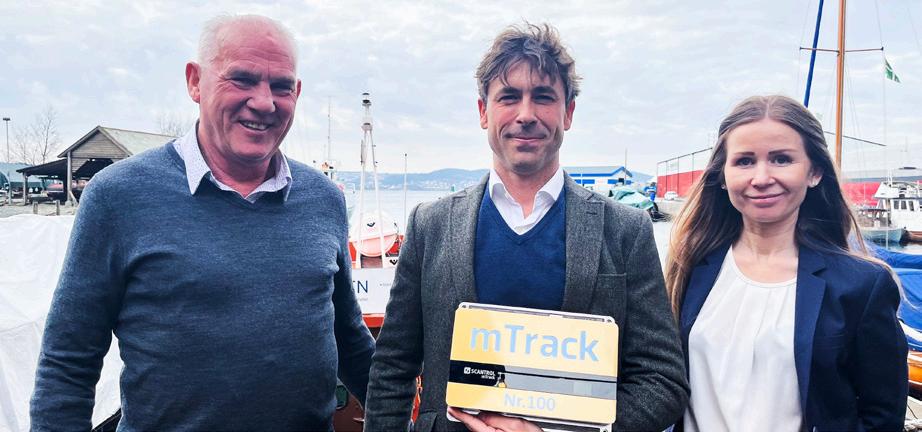
Scantrol has been working with Ibercisa since 2009 and both companies have their origins in the fishing sector, before branching out into other areas, including the market for oceanographic vessels.
“Scantrol has a long experience with delivering control systems for research vessels, mostly for trawl winches. But with the new AHC Controller they have a very flexible product that can be used for oceanographic winches in order to improve data quality when collecting scientific data and during towing operations, in order to keep the load stable at a certain depth or follow the seabed profile,” said Scantrol’s Rolf Krogh Hjelmeland.
He said that traditionally AHC functionality has been too complex and expensive for smaller winches and vessels. One of the goals when developing mTrack was to make AHC also available for smaller winches. Today there are 1200 vessels running Scantrol systems, around a hundred of these in the research and oceanographic market.
Ibercisa has already delivered both Scantrol SYM 7 RSV (Research Vessel Version) and mTrack AHC Controller to a number of new research vessels.
“The general interest for AHC in research operations has increased a lot. It is important for the scientists to get keep improving data quality,” Riveiro said.
NIWA operates research vessels Tangaroa and Kaharoa
and is already familiar with the Scantrol Autotrawl system used for fish sampling on board Tangaroa.
It’s the smaller research vessel, Kaharoa, that’s now being replaced by a new 36-metre vessel designed to undertake fishery and trawl surveys to 600 metres and oceanography down to depths of 6,500 metres. The new vessel is expected to be completed by early 2024.
“The challenge with the new Kaharoa is that it needs to pack in a lot of equipment while minimising size and weight. Even if it is a quite small vessel, NIWA required the latest technology and functionality on board,” Riveiro said.
“To maximise marine science, it is important to have the ability to continue operating, even in challenging and variable sea conditions in the southern Pacific Ocean. Electric winches equipped with AHC will enable us to continue working in weather conditions where previously we had to stop or wait until conditions improved,” said NIWA ship technical manager Greg Foothead.
The winches will work together with an Ibercisa LARS, A-frame and side T-frame. Kaharoa will have two trawl winches and one net drum. Ibercisa is also supplying a set of three electric research winches, piston coring winch (combined with trawl), a combined camera/CTD/acoustic winch with capacity to work, with AHC, up to 6500m, and an oceanographic winch with 4,000-metre capacity.
Many more of these units will be part of the Ibercisa package for research vessels in the future
Miguel Riveiro, Ibercisan Ibercisa’s Miguel Riveiro was in Bergen to celebrate being mTrack customer No 100, receiving a gold coated mTrack unit to highlight this milestone for Scantrol with (left) Helge Hammersland and (right) Anette Bergaas
18 20 TO Smárinn Kópavogur Iceland 2024
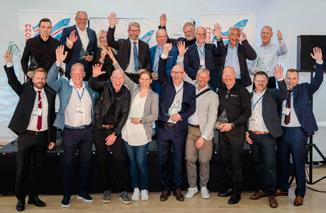
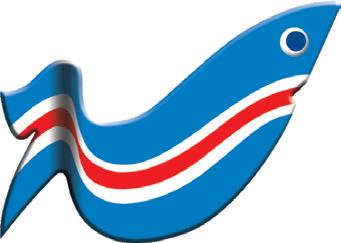
We look forward to welcoming you in 2024
The Icelandic Fisheries Exhibition covers every aspect of the commercial fishing industry from locating, catching, processing and packaging, right through to the marketing and distribution of the end product.
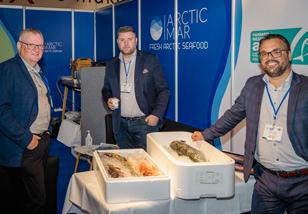
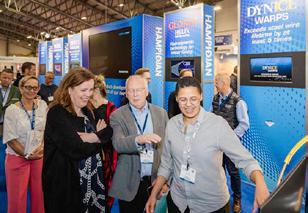
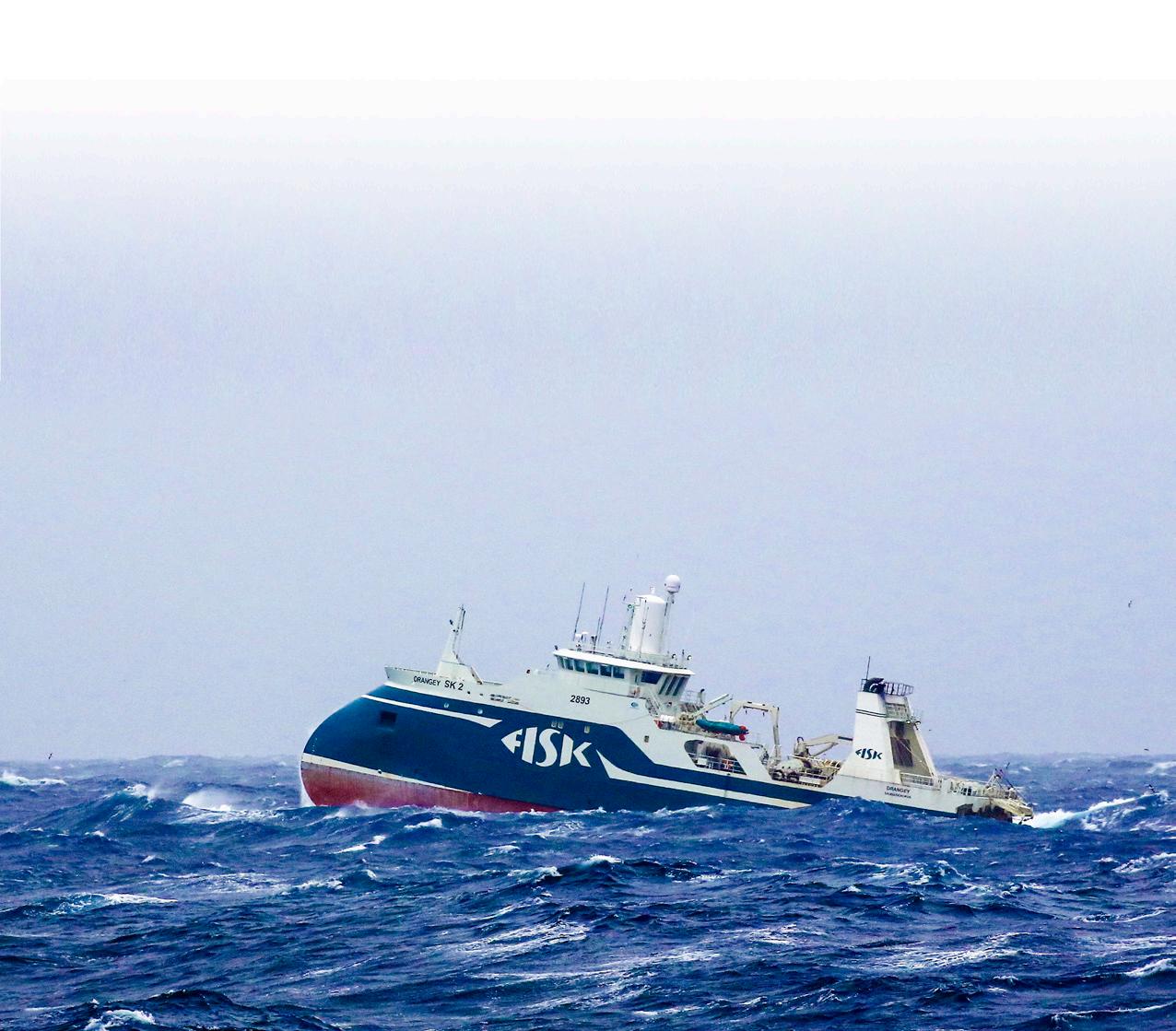
For more information about exhibiting, visiting or sponsoring, contact the events team
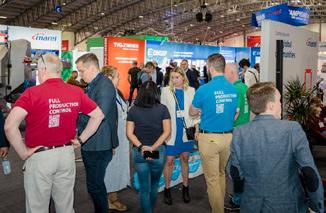
Visit: Icefish.is Contact: +44 1329 825 335 or Email: info@icefish.is
#Icefish
Organised by:
Having seen energy prices skyrocket in 2022 and with the prospect of inflated winter heating and electricity bills, fish farmers across Europe were extremely nervous as last year drew to a close. While for many, those fears didn’t fully materialise as energy tariffs fell back to levels seen before the start of the Ukrainian conflict, the industry remains shrouded in financial uncertainty.
In February this year, the European Commission officially recognised that 2022’s increased energy prices were a threat to the profitability and viability of European aquaculture operations – both directly through increased energy costs and indirectly through higher feed prices and other input costs. A report that it published also highlighted the high dependence of the European fisheries and aquaculture sectors on price swings in the electricity market and the losses suffered as a result of the 2022 energy crunch.
The Commission estimates the EU fishing fleet’s net profits dropped from €218 million in 2021 to a loss of €430 million in 2022, owing to soaring fuel prices. However, no similar estimation was provided for the fish farming sector, where the impact is believed to be substantial but probably not as dramatic.
But it did point out that the share of costs for energy consumption differs widely depending on both the type of species farmed and the production technique used. For example, energy costs in EU mussel aquaculture range from 3% of total expenses in operations using mussel rafts
to 14% of total costs in operations using mussel longlines. With EU rainbow-trout aquaculture, which represents over half of EU freshwater farming production, costs range from an almost negligible percentage in operations using trout cages to 8% of total costs in raceways and trout tanks.
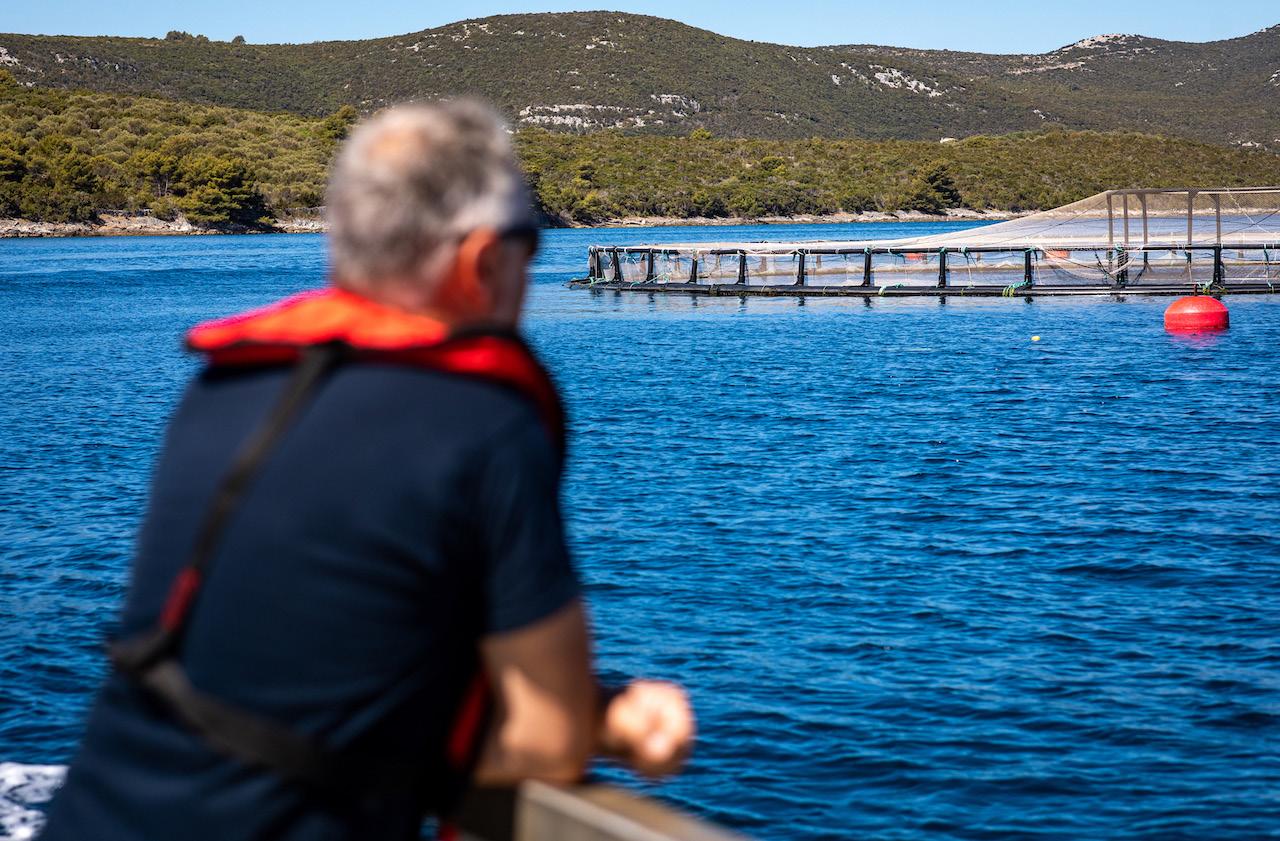
Still, this figure is a far cry from a 35% share of production costs the energy and fuel currently claim in the fishing fleets’ operational costs. Last year, 66% of the large-scale and 87% of the distant-water fleet were not profitable. This factor even forced owners to keep their vessels in ports.
In the fish farming sector, the picture is believed to be brighter, as most companies still manage to make ends meet.
A relatively warm winter and also efforts made by relevant authorities to diversify energy supplies helped the European fish farming industry to survive the main heating period. Apocalyptic predictions about energy shortages,
n European fish farmers have so far managed to make ends meet
The energy cost situation over the winter has been milder than anticipated. However, the situation remains uncertain
Javier Ojeda, FEAP
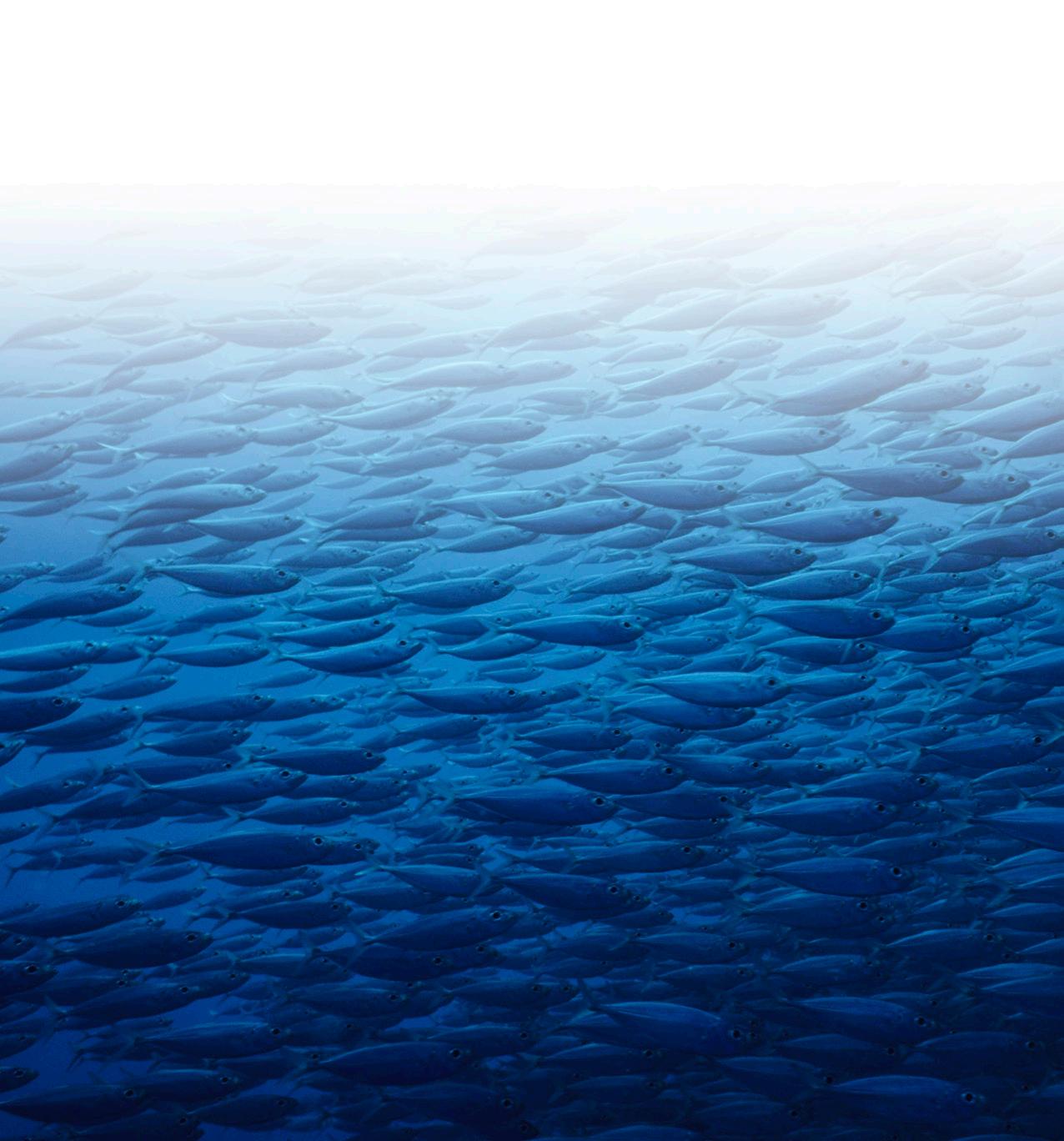
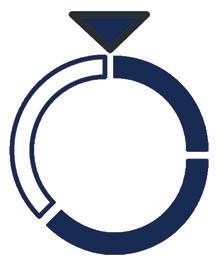


rolling blackouts, and mass bankruptcies also failed to materialise. The energy prices, in fact, subsided to levels seen before Russian troops crossed the Ukrainian border.
“The energy cost situation over the winter has been milder than anticipated. However, the situation remains uncertain,” said Javier Ojeda, General Secretary of the Federation of European Aquaculture Producers (FEAP), adding that, nevertheless, the industry keeps suffering from an increase in general costs, including feed and labour, that continues to put pressure on the economies of fish farming undertakings.
But the biggest issue isn’t the rise in costs itself but the fact that the wholesale fish and seafood prices have failed to keep pace with the farms’ surging expedites, he explained.
“Consumption of fresh fish continues to be under pressure because of higher sale prices and the tightening of the economies of families. However, the higher sale prices do not fully compensate for the producer’s higher production costs. The gravity of the situation differs from country to country, of course,” Ojeda said.
Seafood consumption in the EU was expected to drop for a sixth year in a row in 2022, according to the European fish processors and traders association AIPCE-CEP. Owing to high food inflation, EU seafood consumption was predicted to shrink to 9.4 million tonnes, the lowest level in many years. This continuous downward trend has put heavy pressure on prices, forcing fish farmers to look for cost-saving solutions almost everywhere.
“All of our breeders continue to look for savings and struggle to increase fish prices, which have not kept pace with rising production costs. Inflation is still not slowing down, but some breeders have managed to negotiate more favourable prices than initially for energy, which, next to feed, accounts for the largest share of the cost structure,” Polish Trout Breeders Association Manager Anna SwachaPolańska told WF
face the risks of raising their prices and all the businessrelated costs that were also increasing for them,” said Javier Muñoz, Research Analyst at Euromonitor International.
Muñoz also believes that with sustainability being a cause for decreasing fish and seafood consumption in general and, most recently, increasing prices, it is an opportunity for aquaculture as an industry to put more effort into developing in an environmentally-friendly way.
Indeed, the European Commission stated in its February report that several fisheries and aquaculture facilities have already started to adapt their vessels, facilities, gears and operations to increase energy efficiency. As a result, they have lowered operational costs, energy intensity, and their dependency on fossil fuels.
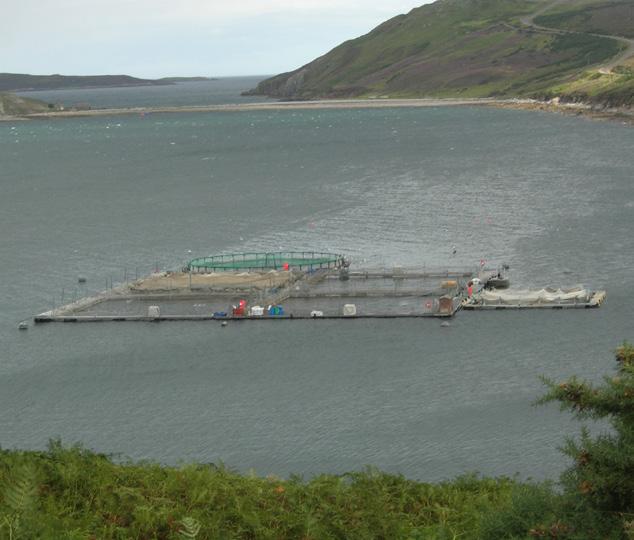
n Now is good time to make European fish farming more sustainable, suggest analysts
Anna Swacha-Polańska, Polish Trout Breeders AssociationFacing challenges, fish farmers increasingly count on state support to keep their operations afloat.
“Currently, [Polish] farmers are awaiting the disbursement of the first funds from the so-called “war aid” under for the implementation of operations to support additional costs incurred by fishery and aquaculture operators due to market disruptions caused by Russia’s war of aggression against Ukraine and its impact on the supply chain of fishery and aquaculture products. The government has announced a second round of this aid,” Swacha-Polańska said.
There is no clarity as to when the current crisis can end. However, as the European Commission pointed out, at least some challenges are here to stay. Most farmers are also not expecting any improvements in the foreseeable future.
“The Russian invasion of Ukraine continues to be the origin of the situation. The ending of the conflict will be required to return to a certain normality and predictability,” Ojeda said.
Still, some analysts believe there’s reason for optimism, as the end of the energy crisis could herald a recovery in fish consumption in the EU.
“It’s true that the tension around the topic at the consumer and household level has been lowering throughout the winter. This might be a positive sign for fish consumption recovery in the long term. Companies still
On the other hand, it’s also recognised that adopting energy-efficient technologies can sometimes have undesirable effects, including on fish stocks or marine ecosystems.
In general, the Commission sees the current energy market situation as a favourable opportunity to spur energy transition within the fish farming sector. But it also concedes that some technological and financial barriers still need to be overcome to make that happen.
n EU rainbow trout aquaculture represents over half EU freshwater aquaculture production
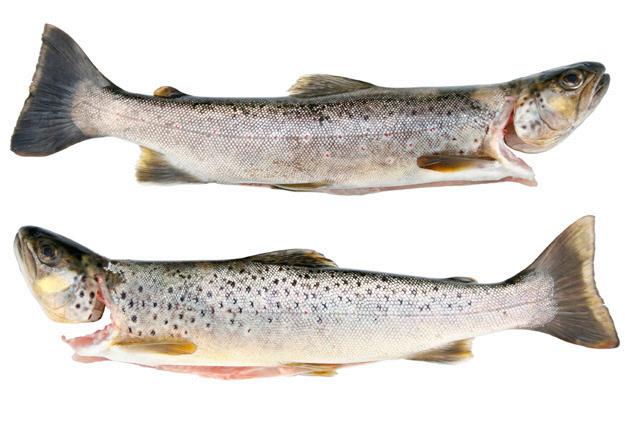
All of our breeders continue to look for savings and struggle to increase fish prices
Analysts feel that despite its current challenges, the longterm outlook for the industry remains bright.
“There is a certain optimism in the fish farming industry. It is the fastest-growing food sector globally, and the innovation and development of an increased level of sustainability demands allows it to adapt to not always favourable situations. The growth of fish farming counters the stagnation of fish and seafood consumption. Fish farmers now have the upper hand when it comes to the whole fish and seafood industry,” Muñoz said.
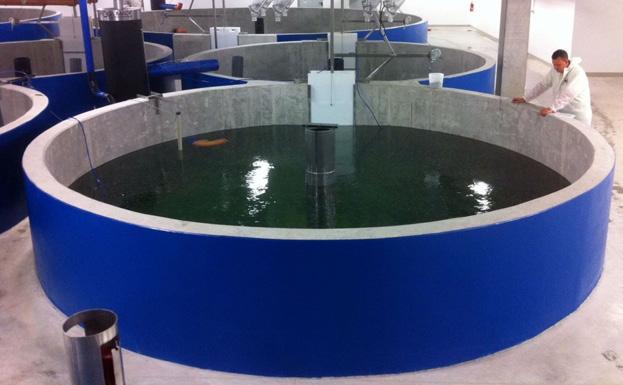 Javier Muñoz, Euromonitor International
Javier Muñoz, Euromonitor International
Still, the biggest challenge European fish farmers may have to face is associated with cheap imports from thirdcountries. In 2022, Europe’s reliance on imports increased compared with the previous year due to Brexit and some other factors. Despite sanctions, Russian managed to ramp up pollock export to the EU.
“The competition from abroad and dependence on fish imports have been an issue for years now in Europe,” Muñoz said, adding that issues like labour shortages and a need to pay higher salaries to employees than in some other countries, cheaper feed and sometimes more strict
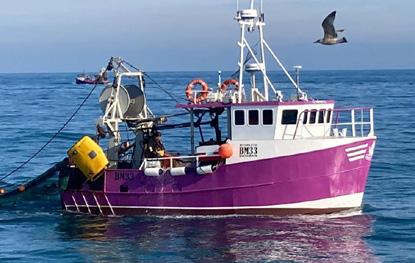

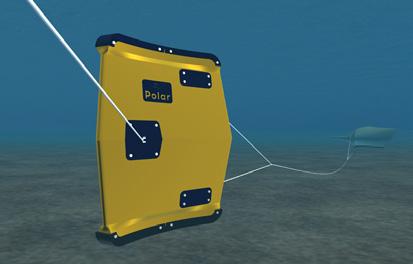
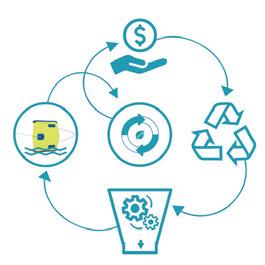
• 11 million tonnes become marine plastic waste
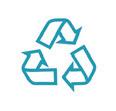
• Pluto doors are made from recycled plastic
• Returned to cycle at the end of its lifetime
regulations are not new but have been exacerbated because of the crisis in Europe – in turn resulting from the Ukraine war and the consequences it has generated, such as inflation. Still, he added, in the long run, European consumers will remain loyal to locally-grown fish.
“Even though in a climate of higher prices, consumers will always look for the cheapest goods, an interest in sustainability and responsible consumption might be the longer-term solution for the fish and seafood industry once the current financial problems start to get better,” Muñoz said.
forecasts have not come to fruition
n Gloomy industry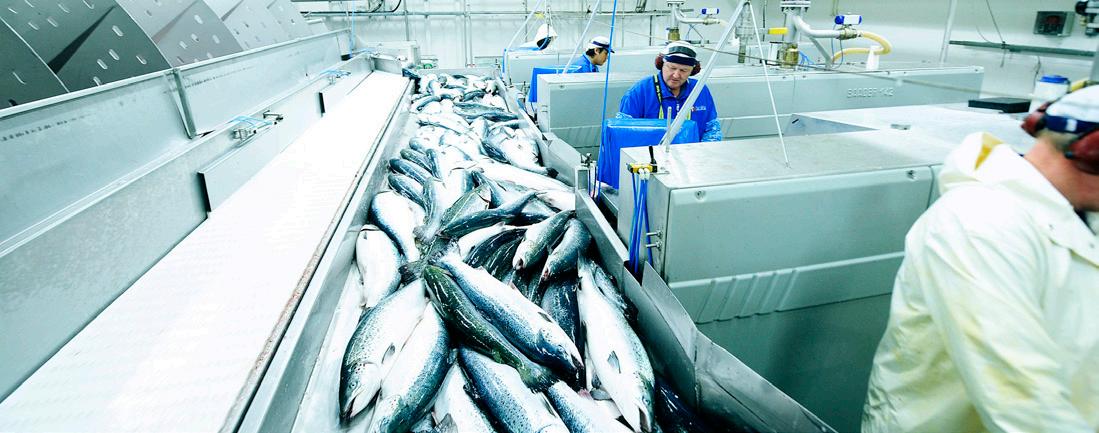
Government makes a 5% reduction to its initial aquaculture resource rent tax proposal, along with a higher pre-tax threshold for producer company profitability
A bill proposing a resource rent tax on Norwegian aquaculture has been presented by government to parliament (Stortinget) for approval. The new proposal remains similar to its initial proposition made in September 2022, although the resource rent tax rate is reduced from 40% to 35%.
Norwegian government explained the intention of the proposal is to ensure local communities along the coast and society as a whole receive a greater share of the value created by the fish farming industry.
shall benefit society as a whole. Access to our common natural resources has enabled this industry to generate particularly high earnings. All of us should be able to derive greater benefit from the significant value that is created. It is now the time to introduce a resource rent tax for the aquaculture industry,” Prime Minister Jonas Gahr Støre said.
According to the country’s Minister of Finance Trygve Slagsvold Vedum, the model, which sees society receive a share of the profits generated from the utilisation of its natural resources has served Norway well.
“The resource rent tax on petroleum has played an essential role in building up the Government Pension Fund of Norway. We are continuing this tradition by also introducing a resource rent tax on aquaculture, which will make it possible to create employment and generate earnings, while local communities and society as a whole are also able to receive a share of this value by making coastal areas available to the industry,” Vedum said.
n The government proposes setting the tax rate at 35%, with revenues based on the market value when fish are removed from the pen
“We have a long tradition in Norway in which value that is created from using our common natural resources
“Significant value and local employment are created when skilful and industrious people are granted access to our fjords. When there are very high profits from this value creation, parts of these profits are accrued to the local
The Norwegian government’s revised resource tax proposal to parliament has been acknowledged by some of the country’s leading salmon producers.
In a statement filed with Oslo Børs, SalMar ASA said it is a proposal that must be approved by the Norwegian parliament where final clarification is expected before the summer. “SalMar submitted a detailed response to the public consultation process
clearly and strongly opposing the proposed tax. The basis for the tax proposal assumes the salmon industry generates excessive returns compared to the risk involved, but this is not accurate. And SalMar strongly emphasised that the proposal should be permanently set aside.”
Grieg Seafood ASA said parliament is expected to discuss the proposal and enact the law before July 2023. “Thus, the
parliament may still make changes to the proposal which has now been published. When the law has been enacted by the parliament, Grieg Seafood will assess how the tax will impact the group’s strategy and investments.”
Mowi ASA merely stated: “The proposal is not very different to the original proposal, however, the resource rent tax rate is reduced from 40% to 35%.”
Access to our common natural resources has enabled this industry to generate particularly high earnings
Jonas Gahr Støre, Norway’s Prime Minister
‘‘
communities and society as a whole, and can be used for funding good schools, a good health care system, elderly care and good welfare services throughout the entire country,” he added.
The government proposes setting the tax rate at 35%, with revenues based on the market value when fish are removed from the pen, which the companies themselves will set for 2023. From 2024, its aim is to establish an independent price board.
It said that a standard deduction of NOK 70 million means that only companies with significant profits will pay resource rent tax. The tax will be backdated to 1 January 2023.
We have placed particular emphasis on the arrangement ensuring continued growth, while a share of the resource rent from the aquaculture industry will also accrue to the society as a whole,” Støre said.
The proposal sees host municipalities and counties receive more revenues than they do at present. This will be achieved through a significant increase in the production tax (up to 90 øre per kg) and by increasing the municipal sector’s share of the auction revenues etc. from 40 to 55%. To ensure that the entire aquaculture region receives a greater share than it does at present, the government proposes the share of the Aquaculture Fund that is distributed to the counties is increased from 12.5 to 20%. Additional appropriations will ensure the municipal sector receives half of the gross revenues.
SlagsvoldPublic benefits
Government sent a proposal for a resource rent tax on aquaculture for consultation prior to presenting the National Budget for 2023. The Ministry of Finance received about 420 consultation submissions.
“While the basic model remains in place, we have listened to the submissions from the consultation process.
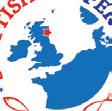
“It has been of vital importance to ensure that the host municipalities receive a greater share of the revenues, which they can then spend on schools, elderly care and other important welfare services for their citizens. At least half of the revenues that come in will be returned to the municipal sector,” Vedum said. “Our goal is that those who make the fjords available to fish farmers, will derive greater benefit than what they do under the present arrangement.”
Støre highlighted that aquaculture “is one of Norway’s largest and most profitable industries” and that the average returns generated during the last decade have been 3-4 times higher than in manufacturing.

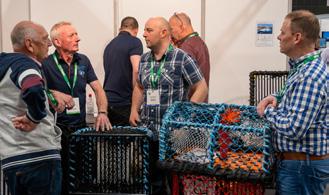
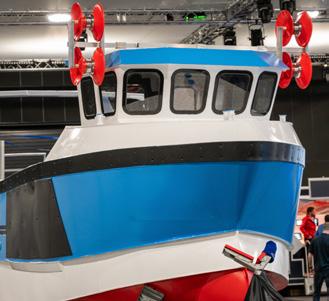
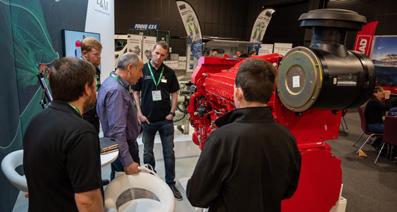
“A larger share of this should accrue to society as a whole, while at the same time we also support the industry continuing to develop and create jobs and value along our coast into the future,” he said.
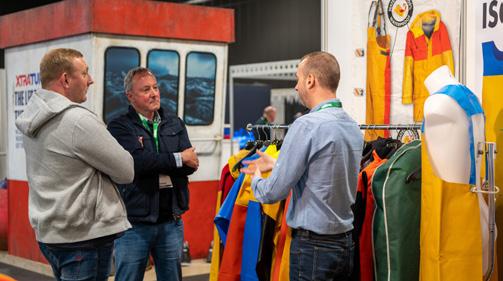
Our goal is that those who make the fjords available to fish farmers, will derive greater benefit than what they do under the present arrangement
Trygve
Vedum, Norway’s Minister of Finance
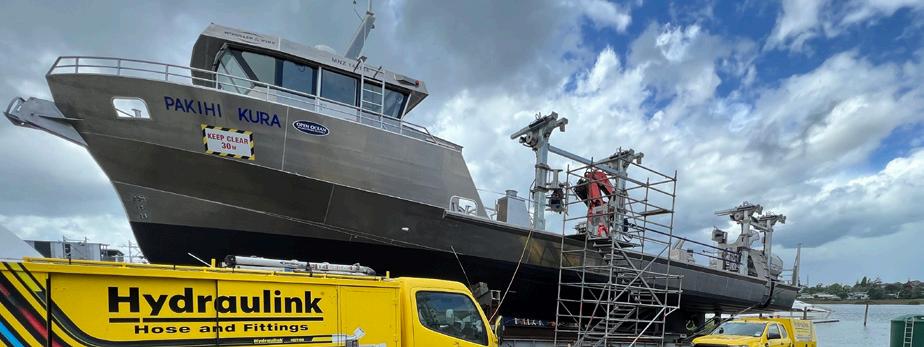
Purpose-built by McMullen & Wing to withstand the Bay of Plenty’s most challenging sea conditions, 30-metre Pakihi Kura has entered service
Its design was a collaborative effort between Oceantech Design, who provided the preliminary design including styling, naval architecture, geometry, structural, stability and performance calculations, and McMullen & Wing, who took the preliminary design and developed the workshop drawings required to execute the build.
The single-screw vessel, constructed from marine grade aluminium, has the capacity to carry up to 105 tonnes of product on deck, whilst maintaining a service speed of 10-12 knots thanks to the 969kW Caterpillar C32 main engine. Additionally, a 280kW Caterpillar C9.3 auxiliary engine powers the extensive hydraulic systems.
“One of the key factors in choosing McMullen & Wing was the ability to design our vessel with features to meet the unique and challenging operating conditions experienced in our region,” Whakatōhea Mussels Chief Executive Peter Vitasovich said. “This was critical to ensuring a strong partnership in both the design and build of our new vessel.”
The company’s 3,800-hectare offshore farm lies 5km off the coast of Opōtiki and is capable of producing 20,000 tonnes of mussels annually – one fifth of the current total New Zealand industry production. During storm conditions, the richly-productive area has measured peak wave heights of over 15 metres, with average wave heights over 9 metres for extended periods.
McMullen & Wing’s marine expertise was complemented by Hydraulink’s own expertise as the supplier of hydraulic hoses and fittings.
“A top-class hydraulic system is critical to the operation and safety of any mussel farming vessel – and McMullen & Wing’s hydraulic fitout for Pakihi Kura is a masterpiece,” Hydraulink Area Manager Craig Jenkins said. “They mapped out the working spaces beautifully to provide easy and swift access for hydraulic installations and service to ensure optimum safety and reliability for the many hydraulic systems on which the vessel depends. Their forethought will pay dividends in terms of system
Unique workboat design
McMullen & Wing Technical Manager Jeff Porter said the collaborative hydraulic system design by Dana Brevini and McMullen & Wing builds on the successful features of another vessel in Whakatōhea Mussels’ fleet, Kukutai, and results in functionality tailor-made for a challenging environment.
“It is a unique design with features that are particularly suited to workboats in many marine environments, including marine transportation, fishing, energy exploration, and other tasks where seaworthiness, manoeuvrability and lifting, loading, and unloading capability are at a premium.”
The vessel’s main deck features a large crane mounted on a fabricated aluminium plinth along with four davits used for handling the mussel lines, plus a line tensioning winch and the mussel harvesting equipment. A Palfinger PK33002 (M) E folding crane has a maximum outreach of 16 metres, enabling it to reach anywhere on the vessel. It has a lift capacity of 2 tonnes at 9.5 metres, enabling the crew to offload two 1-cubic-metre bulk bags of mussels at a time on to the dock.
Its mussel harvesting equipment package from Ansco Engineering includes a powered walking wheel and two idler wheel assemblies mounted on the davits, a powered infeed conveyor recessed flush with the hull side to help bring the mussels aboard, a rope washer, a declumper/ washer unit, a size grader along with a series of conveyors that link the equipment together. A standalone mussel seeding machine is also stored on deck and can be shifted in and out of position at the forward end of the main deck using the Palfinger crane.
The auxiliary engine pump drive powers five hydraulic pumps supplying four circuits – the deck gear, the deck crane, the bow thruster and windlass, and the seawater pumps. Load-sensing technology is used on two of the circuits to maximise energy efficiency. The vessel’s hydraulic tank stores 2,250 litres, while the circuit volume is close to 3,000 litres once keel-cooling and pipe circuits are included.
Since 1983 BORGARPLAST have manufactured high-quality fish containers for demanding fisheries in Iceland and worldwide.
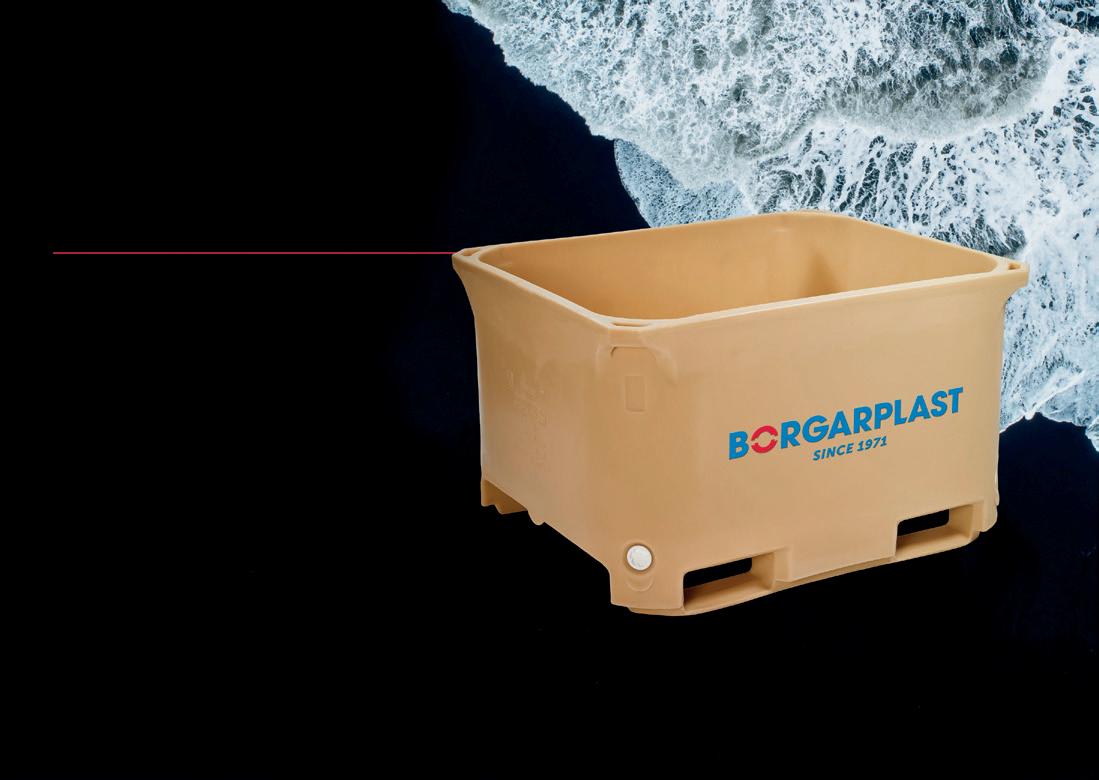
For further information, please contact our sales team: borgarplast@borgarplast.is +354-561-2211
borgarplast.is/en/
The 24th edition of Europe’s largest commercial marine and workboat exhibition, is a proven platform to build business networks.
Seawork delivers an international audience of visitors supported by our trusted partners.
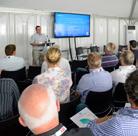
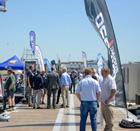
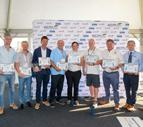
Seawork is the meeting place for the commercial marine and workboat sector.
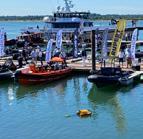
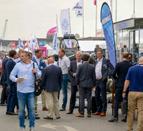
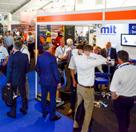

For more information visit: seawork.com contact: +44 1329 825 335 or email: info@seawork.com #Seawork
12,000m2 of undercover halls feature 500 exhibitors with over 70 vessels, floating plant and equipment on the quayside and pontoons.
Speed@Seawork on Monday 12 June at the Royal Yacht Squadron in Cowes offers a sector specific event for fast vessels operating at high speed for security interventions and Search & Rescue.
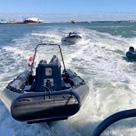
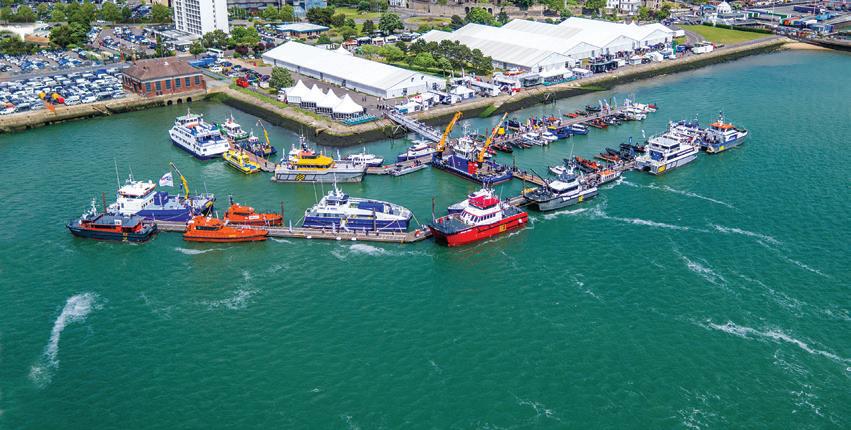
The European Commercial Marine Awards (ECMAs) and Innovations Showcase.
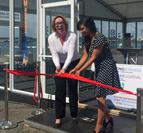
The Conference programme, chaired by industry experts, helps visitors to keep up to date with the latest challenges and emerging opportunities.
The Careers & Training Day on Thursday 15 June 2023 delivers a programme focused on careers in the commercial marine industry.
Scottish Sea Farms has taken delivery of its biggest landing craft to date, designed to support the company’s move to farms of fewer but larger pens
Nineteen-metre Hollie Rose was built in Scotland by Bute Boatbuilders to a design by Argyll-based naval architect AG Salmon. The vessel, equipped with a PK32080 Palfinger crane and twin MD196TI Doosan diesel engines, will be based between Mull and Oban, and deployed across Scottish Sea Farms’ mainland estate, assisting with net washing, inspections and treatments.
In a first for Scotland, the boat is fitted with a state-ofthe-art remotely operated vehicle (ROV) Manta net washer, supplied by Norwegian company Mainstay, that removes marine debris from pens during washing, helping create an optimum environment for fish.
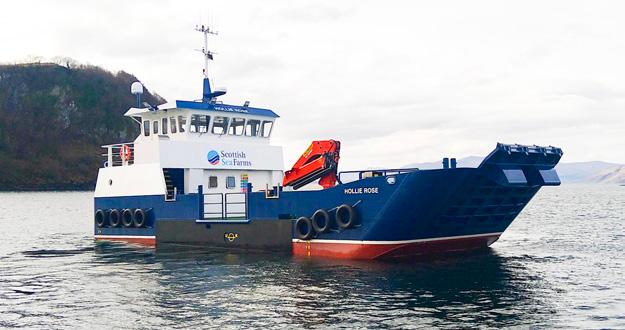
The Manta net washing system also has hole detection software, recording any possible damage to the nets and further improving containment surveillance.
The landing craft also has onboard accommodation for two crew, enabling faster reaction times and greater flexibility.
Scottish Sea Farms Mainland Marine Engineering Manager Craig Cameron, who was involved in commissioning the new boat, said Hollie Rose will be ready to go where needed at short notice.
“Having accommodation on a landing craft is new for us. It gives the farms a better service and makes the vessel more flexible. The two crew will work two weeks on/two weeks off, which is becoming an increasingly popular working pattern in rural areas where housing is scarce,” he said.
Changing up
Skippers David McKie and Jacob Ellis were appointed via internal promotion, with each bringing 10 years’ experience with Scottish Sea Farms, most recently in managerial roles at Bloody Bay farm.
Cameron said the company’s future landing craft are likely to be at least the size of Hollie Rose, if not bigger, in line with the move towards installing wider diameter pens at farms.
Scottish Sea Farms installed its first 160-metre circumference pens at its Fishnish A farm, off Mull, late last year, with four of the larger pens replacing the 10 existing 100-metre pens, while maintaining the same biomass.
The switch to fewer, but heavier and safer, pens not only provides better conditions for the fish but also frees up the farm team’s time so they can focus on the stock’s health and welfare. It is a strategy due to be rolled out at other Scottish Sea Farms locations.
Cameron said there are several Scottish yards that could build boats to Hollie Rose’s specifications.
“We contacted different yards in Scotland to get prices and availability and Bute was the best fit for us. We always look to local builders first.”
Hollie Rose has been in service since the beginning of April. The vessel was named after Cameron’s two daughters.hydraulic tank stores 2,250 litres, while the circuit volume is close to 3,000 litres once keel-cooling and pipe circuits are included.
Royal DSM has launched new technology
Digital SalmoFan to accurately measure the colour of salmon fillets throughout the value chain.
According to DSM, Digital SalmoFan is a portable, user-friendly device measuring the colour of salmon fillet according to a numeric scoring system. The innovation builds upon the DSM SalmoFan and SalmoFan Lineal, which are used throughout the global salmon industry to measure fillet colour.
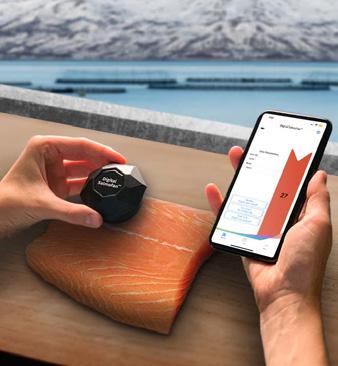
“By introducing Digital SalmoFan, DSM enables the entire value chain to measure fillet colour (at scale) accurately and objectively. Farmers, feed producers, processors and retailers can now move their pigmentation programmes into the digital
era, optimising colour management and being able to capture greater value from fillet colour. One language of colour, any time, any place,” said Fabio Cervellione, Director Nutrition & Health Solutions Aqua Global at GO Johnsen.
Digital SalmoFan features include:
n Portable, compact, and easy to use anywhere, without any light interference
n Objective and accurate measurements expressed as a SalmoFan score
n Bluetooth connection to smartphones and tablets, generating an on-screen SalmoFan score
n Digital SalmoFan app gathers, stores and shares data collected from colour measurements
n The new vessel will be based between Mull and Oban, and deployed across Scottish Sea Farms’ mainland estate
• Keynote Address: Iceland’s Use of Captured Seafood By-Products
Jonas R. Vidarsson, Director of division of value creation, Matís
• Keynote Address: What role may byproducts play in the future of marine ingredients?
Petter Johannessen, Director General, IFFO
• Innovative Technology unleashing fish waste value potential
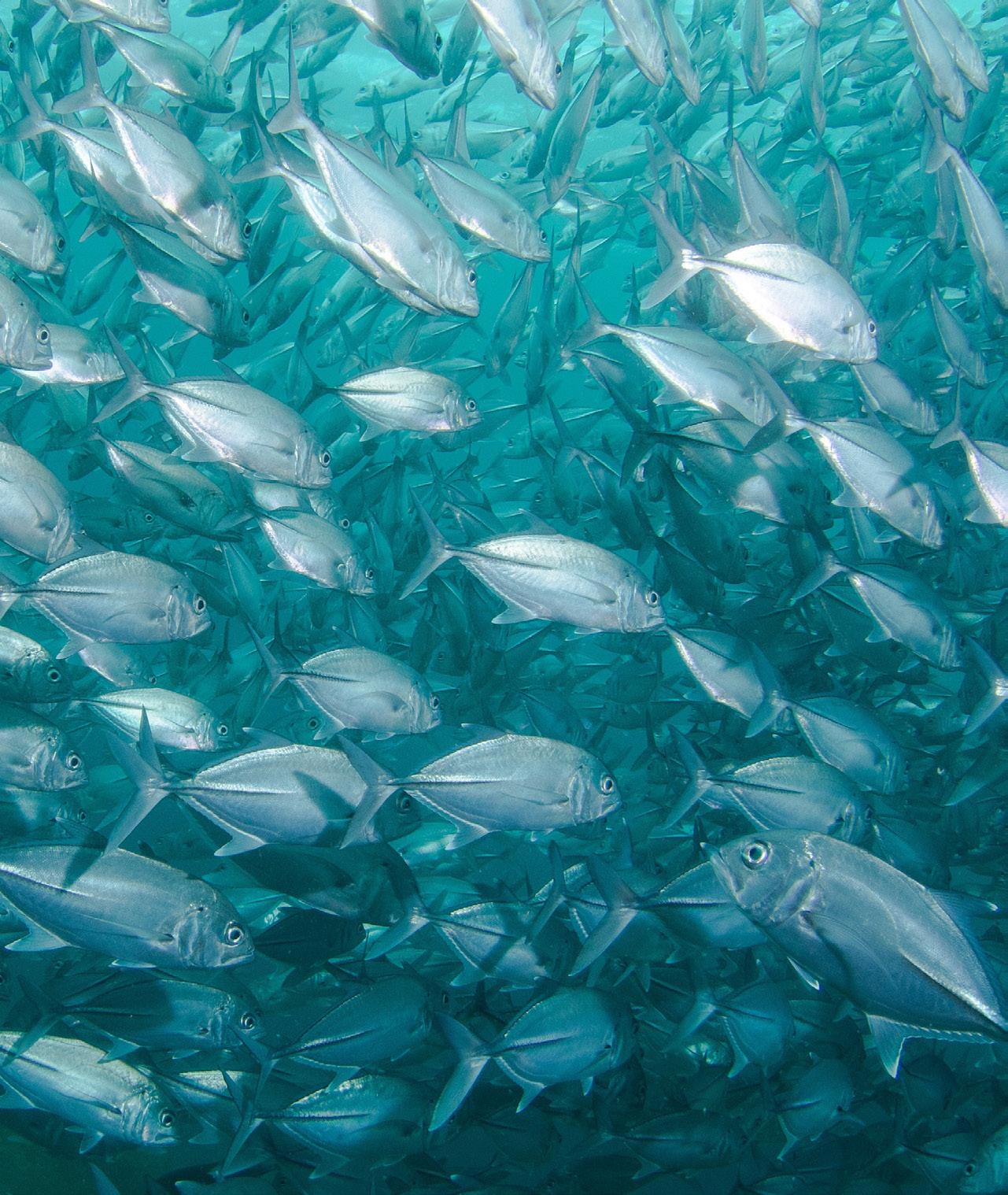
Wenche Uksnay, Cluster Manager, NCE Blue Legasea
• Co-Product Valorization – Towards an industrial Implementation of innovative Food Processing Concepts to achieve 100% Utilization
Dennis Lohmann, Head of Technology Management, BAADER & Dr Pia Meinlschmidt, Product Manager Fish, Food Science & Technology, BAADER
• The Journey to 100% Utilisation
Erla Ósk Pétursdóttir, Managing, Director, Marine Collagen ehf
• N-Atlantic pelagic fish oils originated from Herring and Mackerel - The new exciting Natural fish oil source in times shortage

Snorri Hreggvi Osson, CEO, Margildi
Please note: recordings of the sessions are also available
To make your purchase, or download the papers visit: icefishconference.com contact: +44 1329 825335 or email: info@icefishconference.com #FishWasteForProfit
Operated by:
Media Partner:
The net for technology-driven fish farming KikkoNet is made of UV stabilised, extremely strong and lightweight Polyethylene Terephthalate (PET) monofilaments, woven into a double twisted hexagonal mesh.
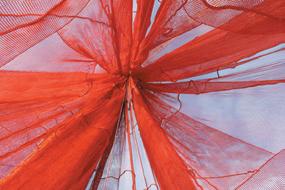
Mayank Batra and Marco Montagnoli
0060 126 883 709
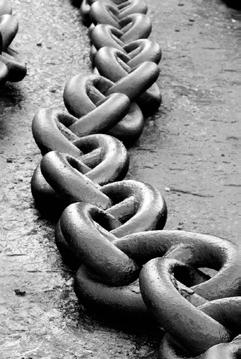



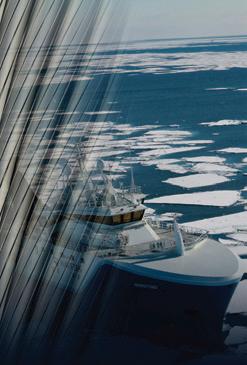
Beck Pack Systems A/S DK-3700, Roenne, Denmark Tel: +45 56 95 25 22 info@beck-liner.com
Beck Pack Systems, Inc. Seattle, WA, USA Tel: +1 425 222 9515
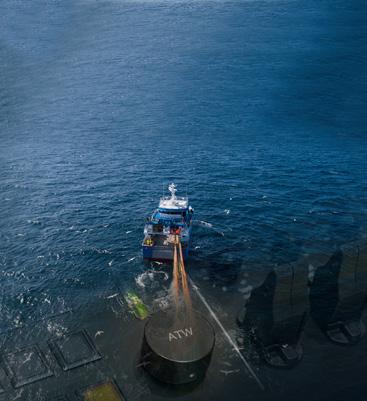
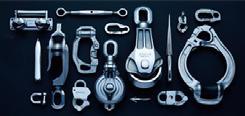

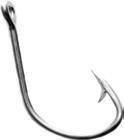

ISO-9001, ISO-22000, FSSC 22000 certified manufacturer and supplier of block liners, folding cartons, and freezer frames for the international food processing industry. To find the agent in your region visit: www.beck-liner.com
galvanized and PVC coated multifunctional wire mesh products. Our SEAPLAX marine mesh uses include lobster and crab traps, oyser trays, aquaculture and general marine applications.
and aquaculture industry with innovative solutions within: Pumping, Classification, Weighing, Ice handling, Storage, Transport and Distribution systems. IRAS offers single products or complete systems for raw material handling.





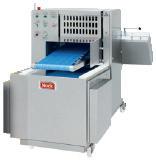

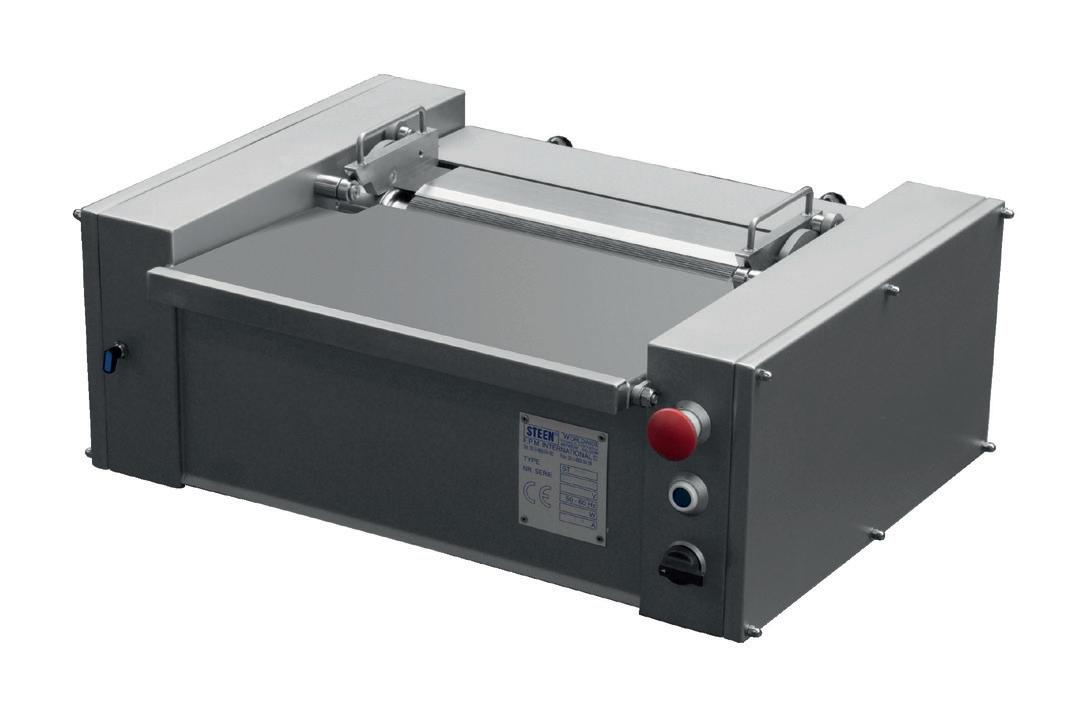
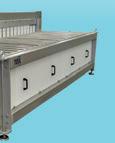
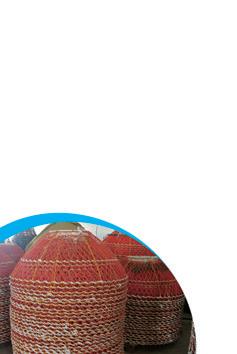
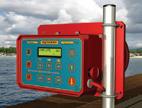
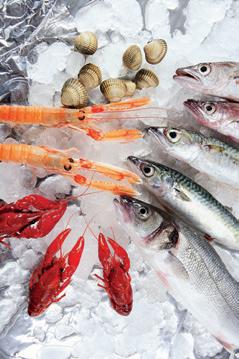

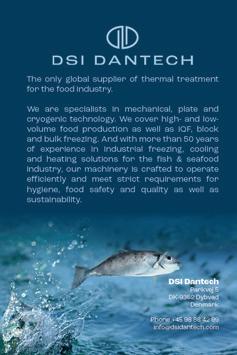

Based on decades of experience,





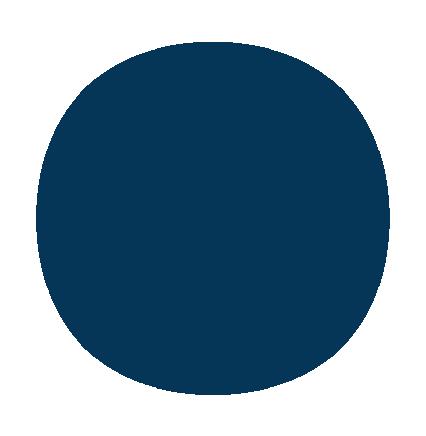
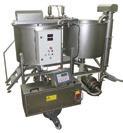
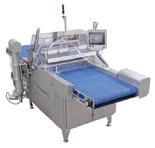
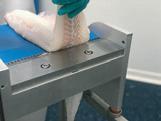

Fishing nets, aquaculture nets, agriculture nets, sports nets, all types of ropes and twines.
No.88, Di An Truong Tre St., Di
An Town, Binh Duong, Vietnam Tel: (+84) 916 225 068 (+84) 251 378 9125 sales@forevernetco.com www.forevernetco.com
World’s leading supplier of Fishing nets (our globally trusted brands are SNG, Sapphire and Olivene), assembled trawls, Purse Seines, Aquaculture cages and anti-predator nets for aquaculture industry, ropes for the fishing, aquaculture and shipping industry. Our products are exported to over 60 countries globally.
Garware Technical Fibres
Plot No 11, Block D-1, MIDC, Chinchwad, Pune, India
Web: www.garwarefibres.com
Tel: (+91)2027990381
Contact: Vivek Kumar
Email: vkumar@garwarefibres.com
Mobile: +917767802806
KING CHOU MARINE TECHNOLOGY CO., LTD.

Fortune Net Group of Companies



No.42 Sto. Domingo Ave, Brgy. Matalahib, Quezon City, Metro Manila, Philippines Tel: 0063287125362, 0063287119238
Fax: 006387125351, 0063287110169
Email: export_fntgrp@yahoo.com melmorales_728@yahoo.com alextanfortune@yahoo.com
Contact person: Mel Morales, Alex Tan
Braided knotted nets; Twisted knotted nets; Raschel knotless nets; Monofilament double knots net; PE Shade nets. All types of twines and ropes, Specializing in: Tuna & Sandrine Nets; Purse Seiners; Mono and Multi gill nets; Nylon & HDPE Trawl nets; Aquaculture Fence & Cage nets; Safety and Sports nets; Ornamental nets.
13 15
NET MANUFACTURERS
We are a professional fish net maker and provide assembly & design service for various nets. We use Nylon, HDPE, PP, PE to make purse seine net, fish farming cage net for smolt, grower, growout, predator & anti-bird, trawl net, trap net, safety net, sports net, twine, float and steel wire. The making of fish nets can be twisted, braided, super-knot knotless or raschell knotless, mono or multi-mono filaments.

Website: www.king-net.com.tw
Email: sales@mail.king-net.com.tw
Caterpillar Marine provides premier power solutions in the medium and high-speed segments with outputs from 93 to 16,800 kW in main propulsion and 10 to 16, 100 ekW in marine generator sets.
www.cat.com/marine Tel:+491719629676
AS Fiskenett is the only company in Norway to design, manufacture, maintain and repair commercial fishing nets for both offshore and coastal fishing fleets.
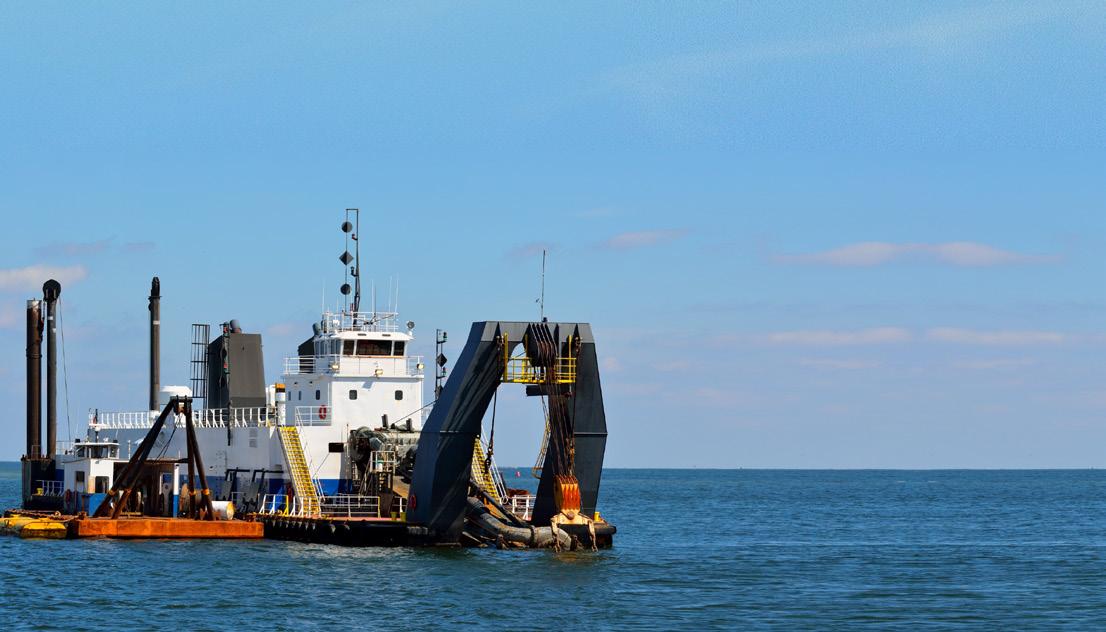

Contact Hugo Ulvatn, MD, to learn how we can help you.
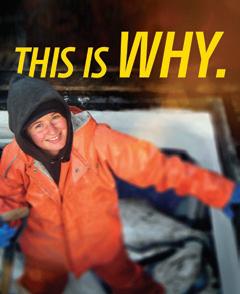
Call: +47 48009504
Email: sales@fiskenett.no
Info: www.fiskenett.no
TO JUNE 202 3 Southampton United Kingdom
Marine Civils is Europe’s leading event dedicated to showcasing the latest equipment and solutions for marine, coastal and other challenging civil engineering projects with unique landscape features.
Reach a larger audience than ever before Reserve now for 2023 and make the most of year round marketing support from Marine Civils, Seawork and our leading commercial marine magazines. In print, online, eNews and social media channels.
Marine Civils attracts representatives from:
• Civil engineering
• UK port authorities
• Energy companies
• Conservation organisations, amongst others
With a big overlap in content and business for companies involved in marine construction, the event is uniquely positioned to provide invaluable opportunities to access wider relevant audiences via Seawork and Maritime Journal.
For more information visit: seawork.com contact: +44 1329 825335 or email: info@seawork.com
OLIVEIRA SÁ
Rua do Outeiro, 906, 4470-150
Gemunde I Portugal
Tel: +351 22 943 49 00
Fax: +351 22 943 49 49
Email: salvadorcastro@wireco.com
Contact: Miguel Oliveira Sá / Salvador Castro
Oliveira SÁ manufactures a full range of products for fishing applications:

Steel Wire Ropes: Green Strand®, Super Yellow Fin®, Super Atlantic®, Zincal® Compact and several other constructions also with possibility of a plastic core impregnation.
Combination Ropes: we produce combination ropes, both in 4 and 6 strands.
Synthetic Ropes: Braided/Twisted and Double Braided ropes with recognized brands such as Astra Line®, Libra Line® and X Trema Line®
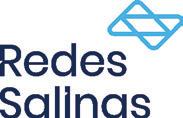
Carretera de Catral, 30 03360 Callosa de Segura, Alicante, Spain
Tel: 0034 965 310 408
Tel: 0034 965 310 354
Email: redessalinas@redessalinas.com www.redessalinas.com
Contact: Srta. Carmen Salinas
Manufacturer of special purse seining nets for tuna and horse mackerel, also trawl gear, ropes and twines
K. Mercierlei 29 • B-2600 Berchem • Belgium
Tel: +32 32 81 73 03 • Fax: +32 32 81 73 04 info@i-coats.be • www.i-coats.be
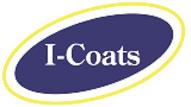
Contact: Koen Van Goethem
We offer environmentally friendly, waterbased coatings for ropes and nets made out of all types of synthetic fibers.
(ARAMIDS, HMPE, LCP , …) Tailor-made products developed to the needs of the market.
Waxes, acrylics, polyurethanes, pigments and specialty coatings (LAGO 45, LAGO BF 10A, ICO-LUBE 10, ICO-THANE 10, ICO-THANE 32, ICO – THANE 96, ICO-THANE 98) All coatings are compatible, allowing development for individual solutions.


REACH PREREGISTERED

Breidvangur 30
IS-220 Hafnarfjordur, Iceland
Tel.Iceland: +354 5651375
Tel. UK: 01525 851234
Email: sales@markusnet.com
Contact: Petur Th. Petursson
We specialise in the development and manufacture of man overboard recovery systems suitable for all types of fishing vessels, such as the Markusnet and the Markus MOB Scramble-net/Cradle.

PEGUET & Cie 12 Rue Des Buchillons 74105 Annemasse, France
Tel: +33 450 95 54 54
Fax: +33 450 92 22 06
E-mail: info@peguet.fr
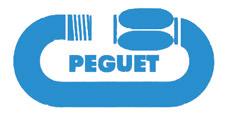
Website: www.peguet.fr
Manufacture of Maillon Rapide® quick links for permanent connection in aeronautics, architecture, rigging equipment, industrial supplies, sailing, parachuting & paragliding, professional fishing, tramways facilities, climbing. All product range self-certified. YOUR PARTNER SINCE1941
AKVASERVIS TRAWLS
Email: office@akvaservis.lt
www.akvaservis-trawl.com
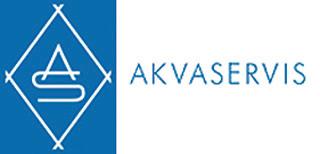
Tel: +370 46 365 363
Las Palmas - Baltic - Murmansk
Designer & manufacturer of Pelagic, Semi-Pelagic & Bottom trawls since 1992 with active trawls in North Atlantic, Far-Eastern & Western-African fisheries.
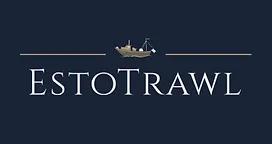
COMPETITIVE PRICES WITHOUT COMPROMISE IN QUALITY
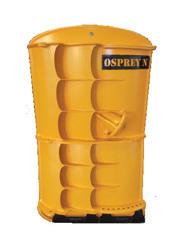
Complete range of high efficient trawl doors for demersal fishing, “off the seabed” semi-pelagic fishing and pelagic fishing.
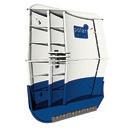
Reykjavík, Iceland atlimarj@polardoors.com www.polardoors.com
The Fuel Efficient Trawl Door
Estrada de Fortons 23 36812 Redondela (Pontevedra) Spain
Tel: +34 986 20 33 12
E-mail: info@grupoeurored.com

Website: www.grupoeurored.com
Hi tech design and production of pelagic and bottom fishing trawl systems. Nets and deck material for tuna purse seiners, inshore fishing and longliners. Everything necessary for fishing activities:
Tel: +33 (0) 2 99 56 14 36 trawldoor.morgere@morgere.fr www.morgere.com
Thyborøn & Poly-Ice Trawldoors for all kinds of pelagic, semi-pelagic and demersal trawling with single, twin- and multipurpose rigging. All doors are “Made in Denmark” according to customer demands and wishes.
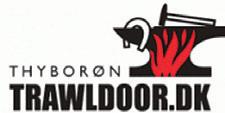
MORGERE trawl doors, COTESI nets, ropes, mooring, BRIDON cable, flotation, CROSBY GROUP naval hardware, longline material, etc. Aquaculture integral supplies and installation of fish farming and Long Line production systems, OFFSHORE facilities.
Eurored Directory.indd 1 30/09/2020 14:32

-we make fishing more profitable VÓNIN LTD
8, Sydhalevej, DK-7680 Thyborøn, Denmark mail@thyboron-trawldoor.dk www.trawldoor.dk
P.O. Box 19 FO-530 Fuglafjørõur Faroe Islands
P.O. Box 19
FO-530 Fuglafjørður
Faroe Islands
Tel: +298 474 200
Tel: +298 474 200
Fax: +298 474 201
Fax: +298 474 201
Email: info@vonin.com
E-mail: info@vonin.com
Web: www.vonin.com
Web: www.vonin.com
Contact: Bogi Non
Contact: Eystein Elttør
Vónin is a major supplier to the fishing fleet and aquaculture industry with branches in the Faroe Islands, Greenland, Canada, Denmark and Norway. Vónin manufactures pelagic trawls, semi pelagic trawl, shrimp trawls, bottom trawls, sorting grids, crab pots, net cages, mooring systems and net washing systems.
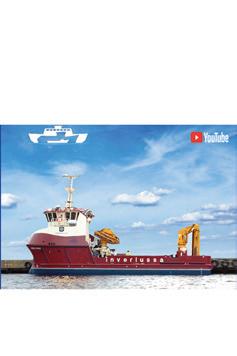
Manufacturer of pelagic trawls, semi-pelagic trawls, shrimp trawls, various bottom trawls, purse seine nets, fish farming nets and sorting grids. Vónin is a major supplier to the North Atlantic/Arctic fishing fleet. We have all accessories in stock.

